I saw the post shared by my friend on Facebook and I immediately asked her to sign me up. It was travel for a cause program by Share-a-smile Project to Batad, Banaue, Ifugao wherein the coordinators raise funds for charity by being travel coordinators and guide. It was a perfect opportunity for me because I haven't had my volunteering for a while and also have not traveled farther than Baguio City or Benguet province in the last months. It will be my first time going to Batad so I was so excited.
Batad is a municipality in Ifugao province in the Cordillera region which is in turn in the northern part of Philippines. It is where one of the five UNESCO World Heritage inscribed Rice Terraces of the Philippine Cordilleras is located. It is about 380 kilometers from Metro Manila and would take about nine to ten hours of travel by land if you have your own means of transportation. Commute will definitely take longer. I will write about this on my next post. For now, let me focus on the volunteering.
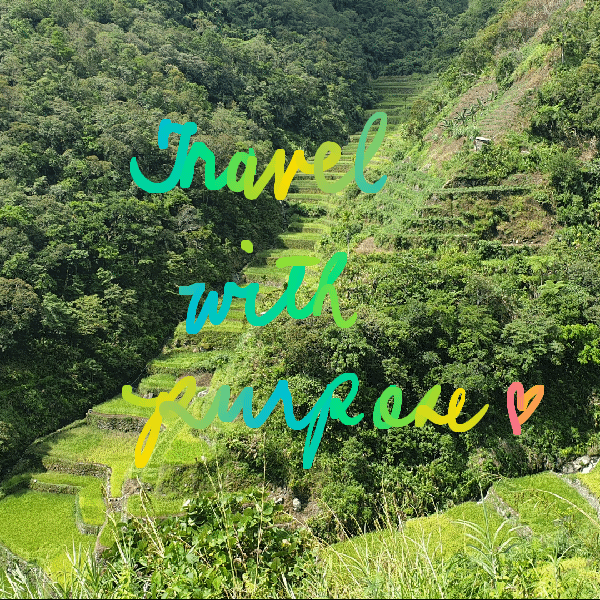
It was supposed to be just travel for a cause but to the coordinator's surprise, there were many donations that came in. So instead of just raising fund from traveling, it also became an outreach.
The meeting place for us who signed up was in north Manila while I will be coming from the other end and straight from work. As expected, I was late. The supposed departure at 9:00 o'clock on Friday night became 10:00 o'clock. Okay, that was not all on me. I arrived at 9:30 while a few more arrived later. There were 30 travelers (i.e. volunteers) plus the coordinators who are a couple and three young ones with them. The three vans we used were full with people and relief goods.
When we arrived at the end of the road in Batad, there were already some of the residents waiting for us, adults and children alike. They helped in carrying the relief goods to be brought to the school where the outreach will be held.
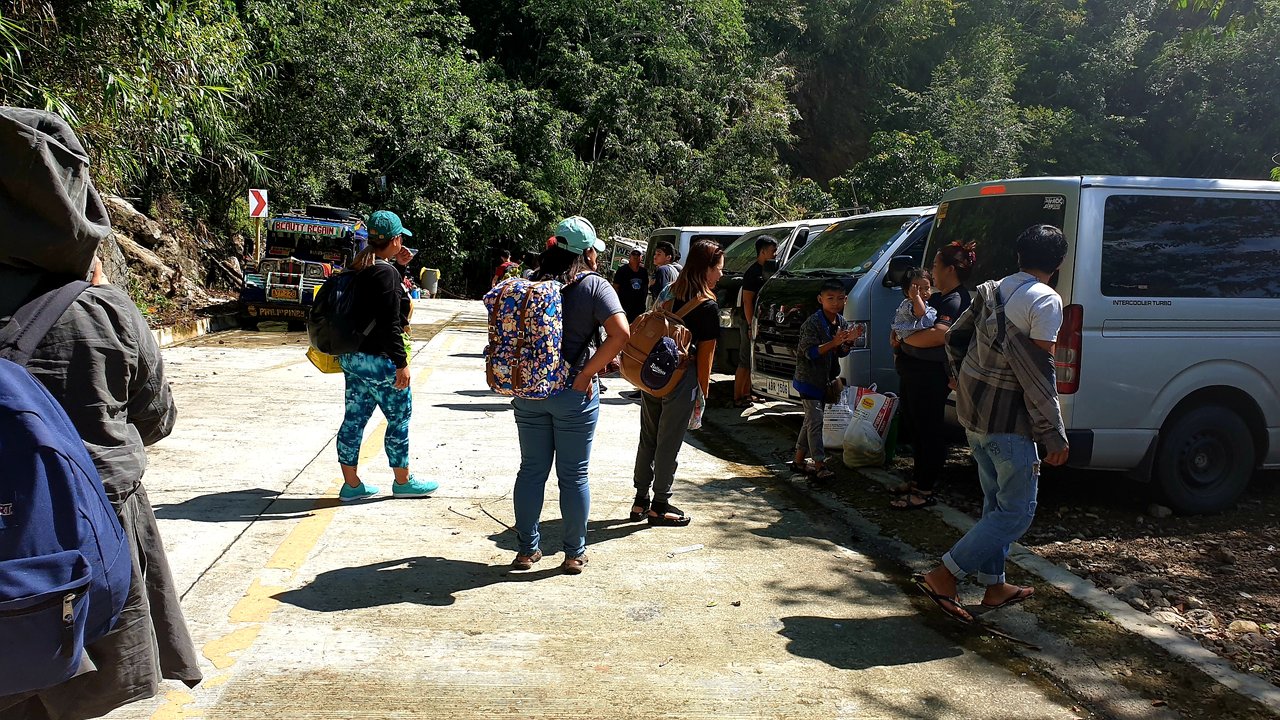
While we were unloading the relief goods, I asked to no one in particular where the school is and they pointed to somewhere below. "So we're going down the mountain. Let's see," I thought.
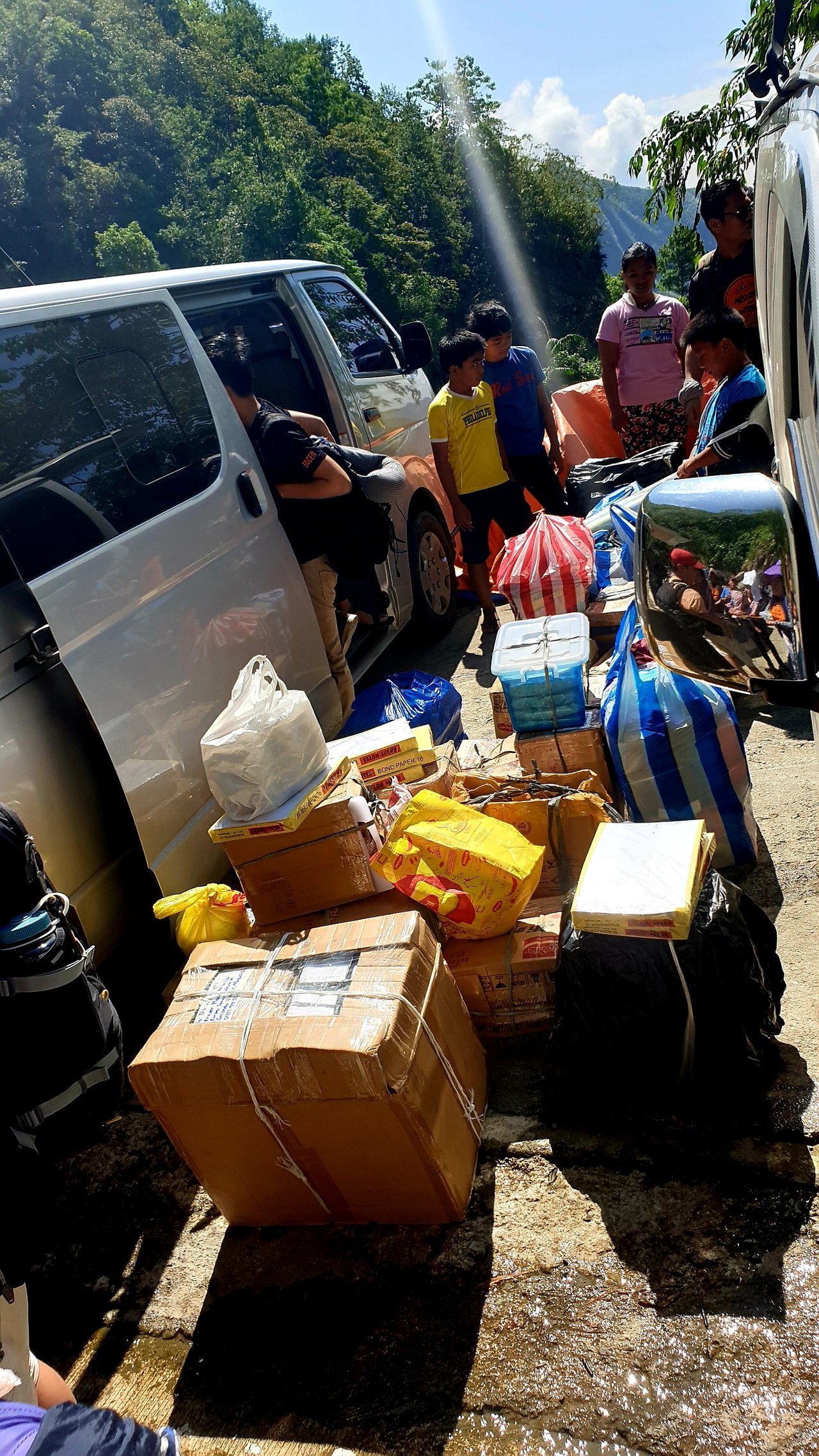
Someone asked in Ilocano dialect where we were staying. They speak the Ilocano dialect but obviously not their mother tongue. It is not surprising.
I can not answer directly because I did not pay attention to the itinerary from our coordinator. I do not recall the name of the inn where we were supposed to stay. Instead of trying to recall its name, I answered in Ilocano dialect to encourage further conversation.
"Haan ko ammo ah. Mabalin met no makidgas kami na lang kanya yo."
"I am not sure. Maybe we can just be guests of you guys, the residents."
A woman answered, "Ah, wen. Ado kami met idiay baba."
"Ah, sure. There are many of us below." Cool. That is how ready they were to host us. And she meant below the mountain where the main village is.
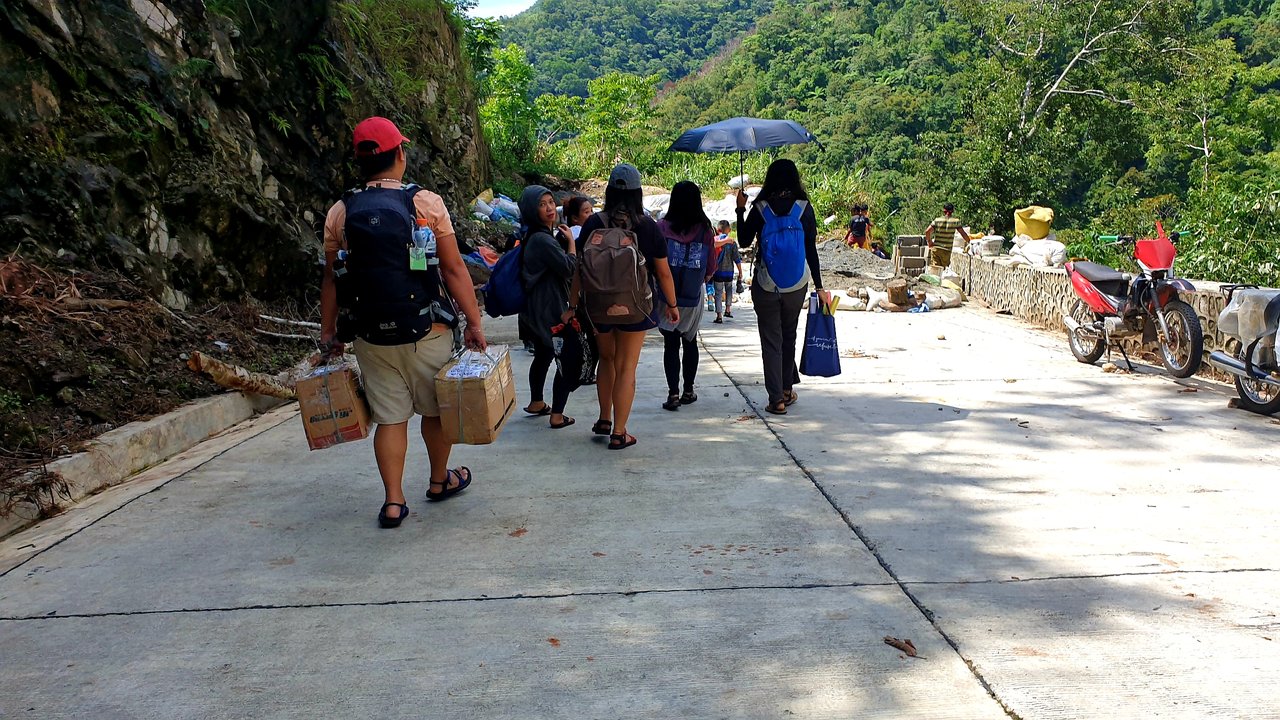
At the end of the road right before the descend is this reminder. "Yeah, right," I thought. "Nobody should come here leaving their trash."
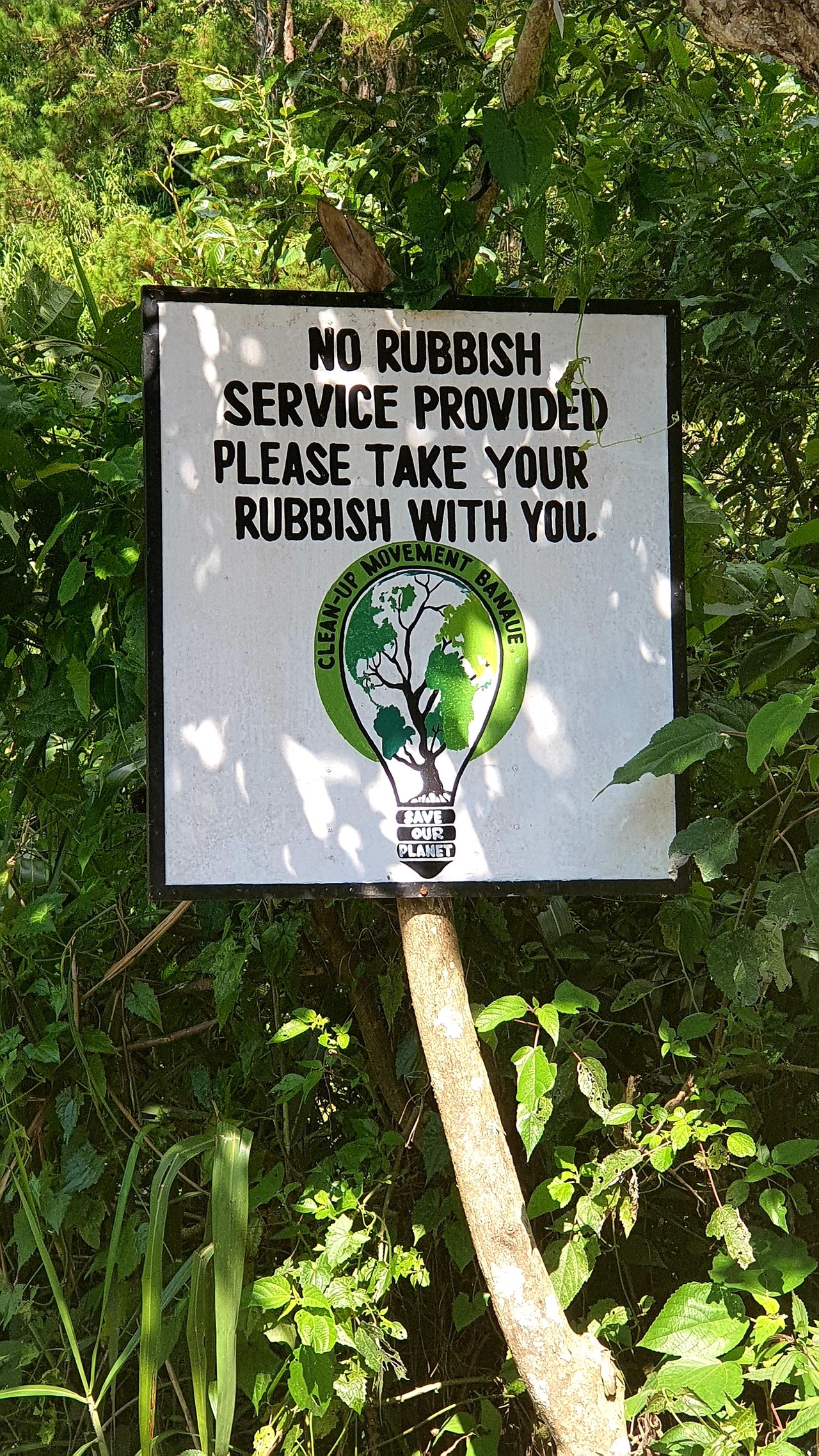
I was born and grew up in the mountains so the trail was fine for me. I thought I was skipping like a grasshopper. For those who are not used to it, a wrong move can end you up at the bottom of the mountain along narrow paths right beside a ravine.
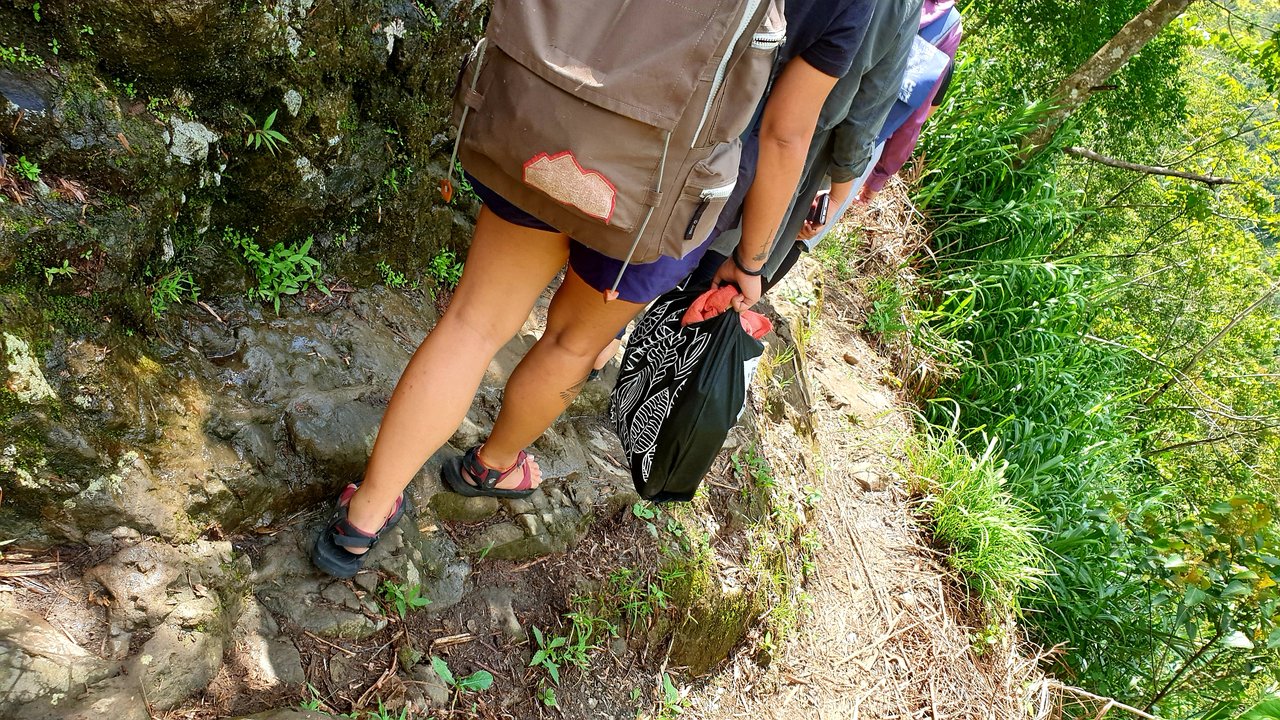
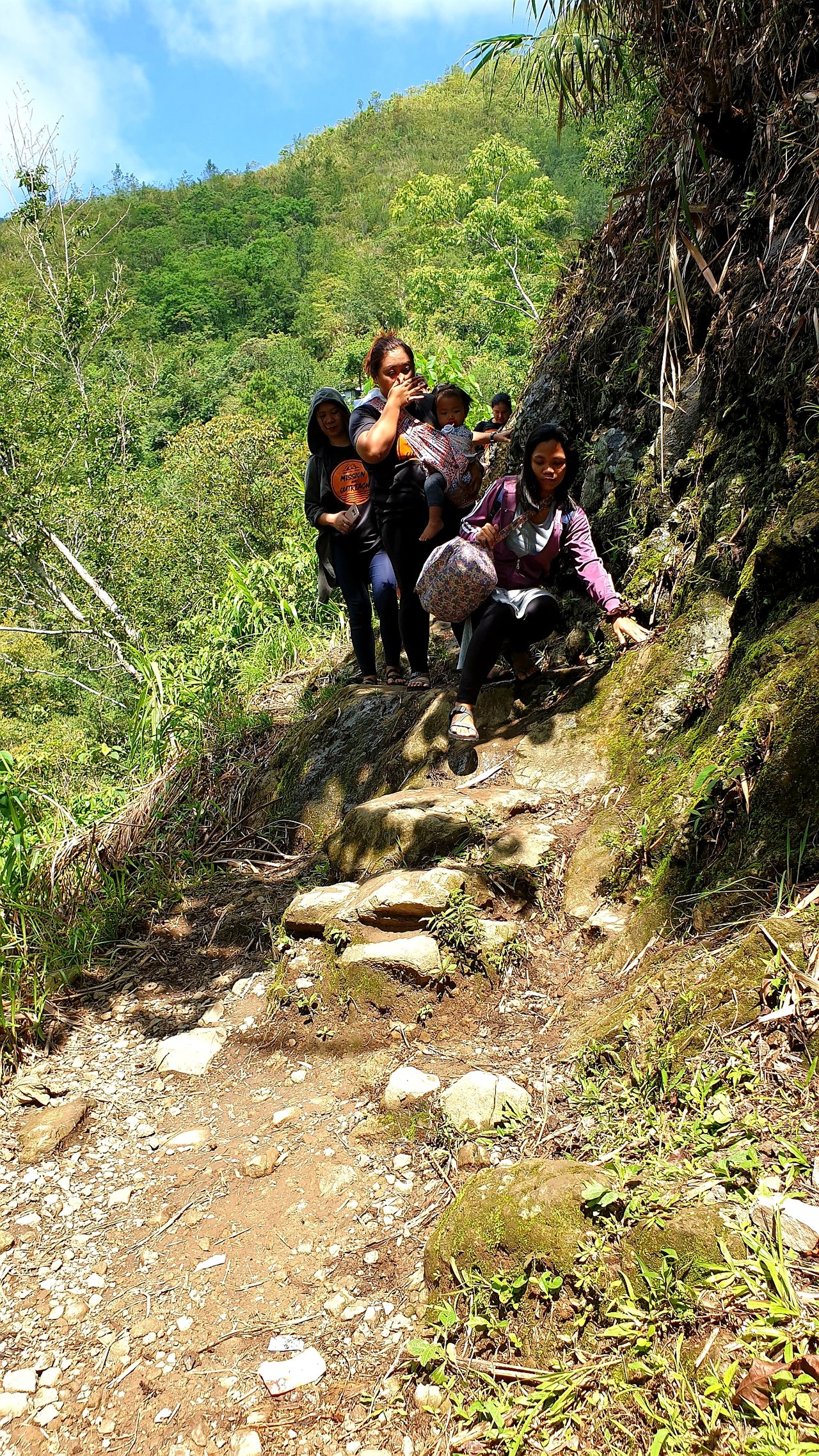
Though, it should scare anyone who wants to go to Batad. Most of the pathway is safe and some parts are even concreted.
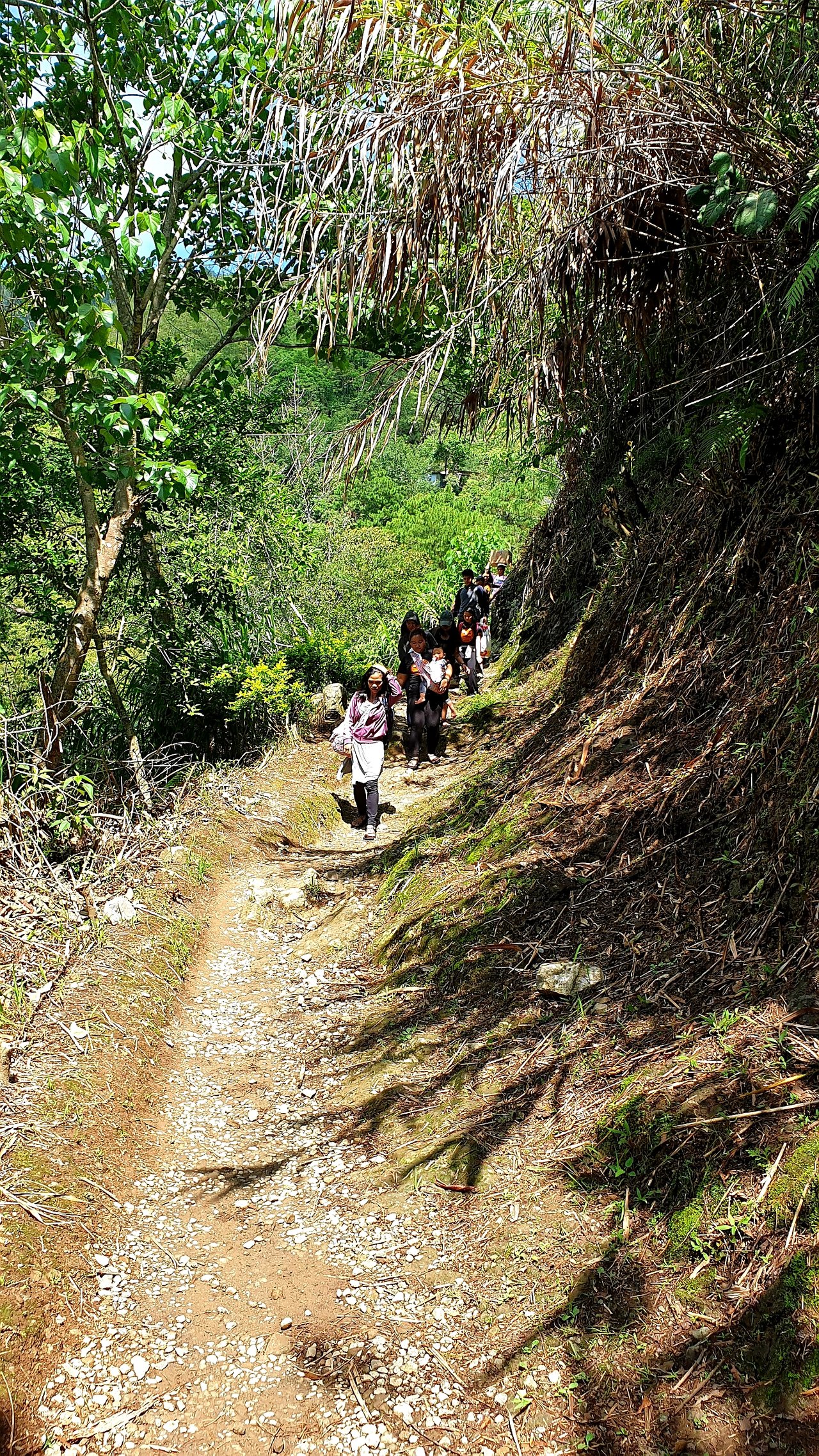
I was surprised to see these boards along the way. These reminded me the question earlier as to where we will stay. There are many accommodation options here after all. I just wonder who on Earth will come to the middle of the mountain without reserving for their accommodation first.
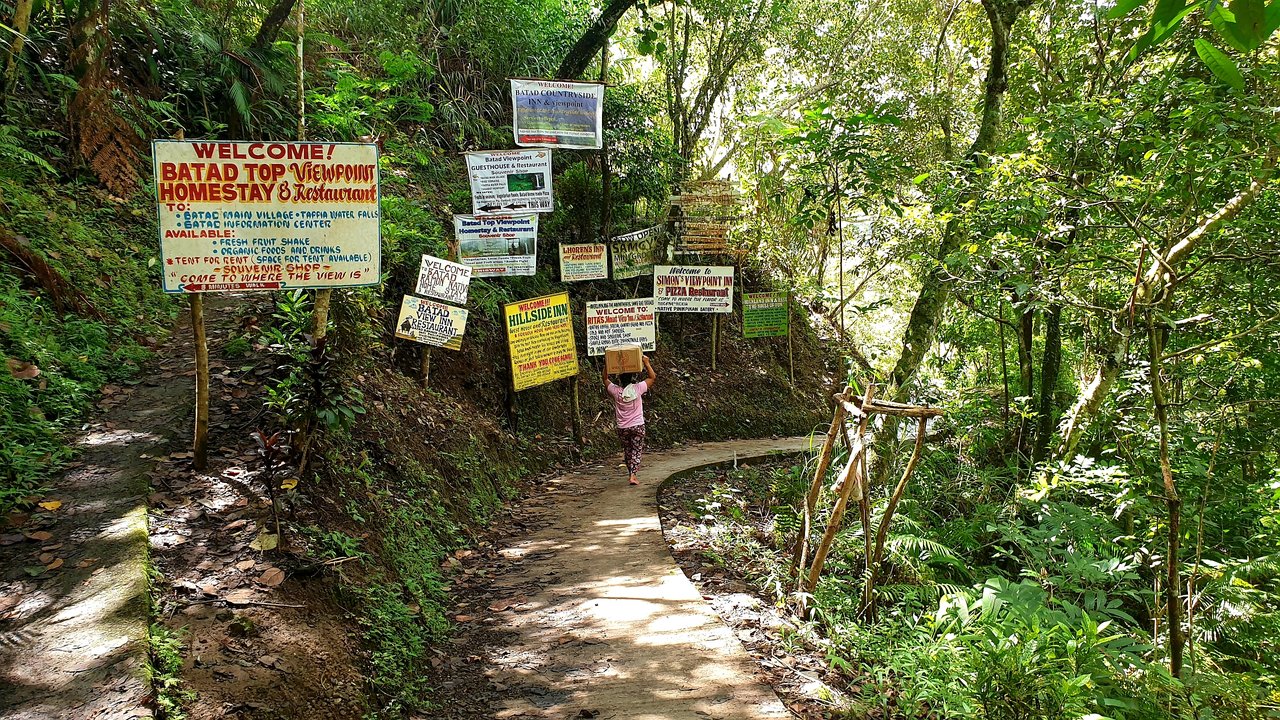
Somewhere in about the middle of the hike is this viewpoint with the UNESCO marker. As expected, all of us stopped for photo shoot. Almost everyone took turns in taking their photos beside the marker. I preferred to take its photo as it is.
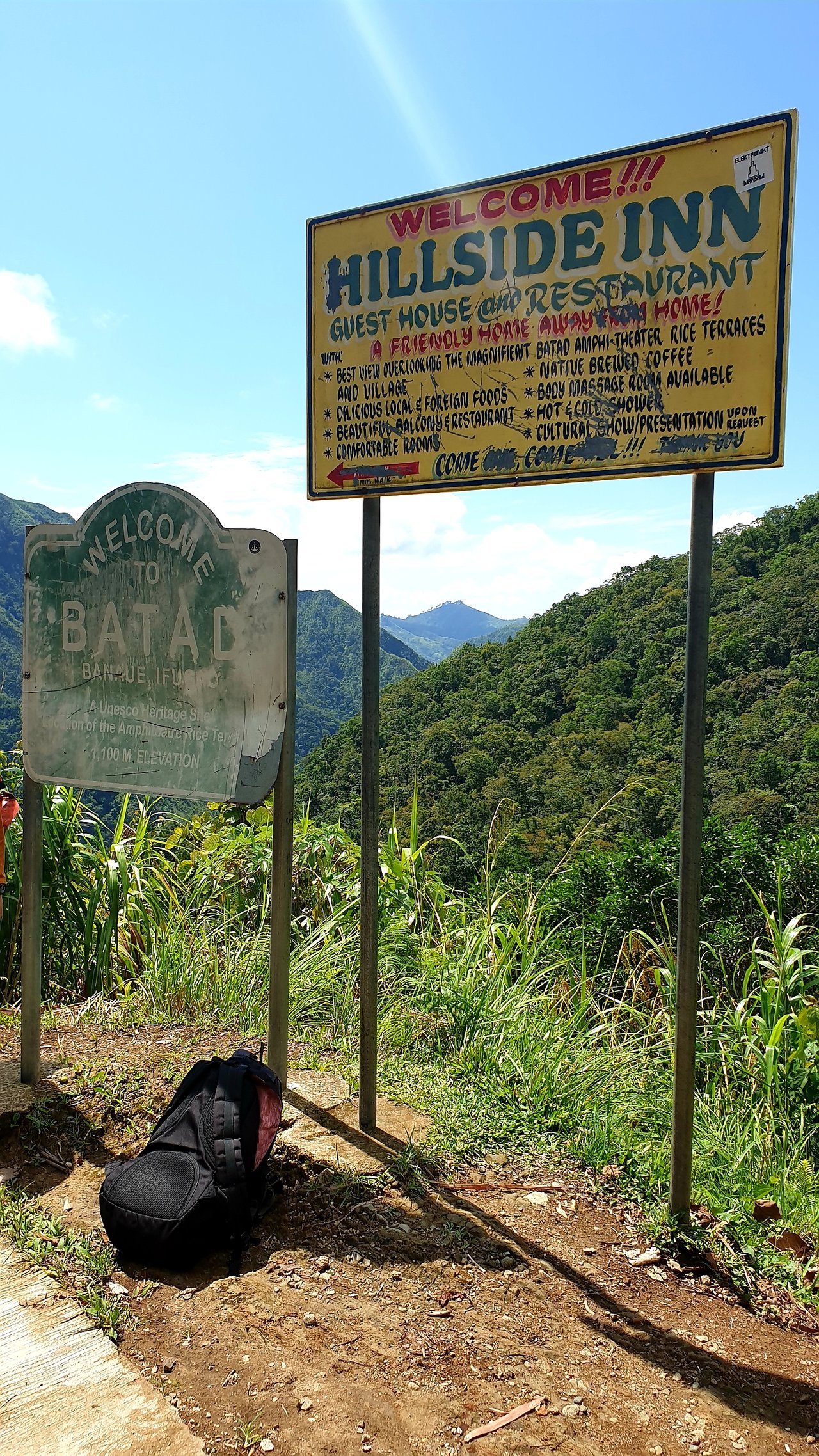
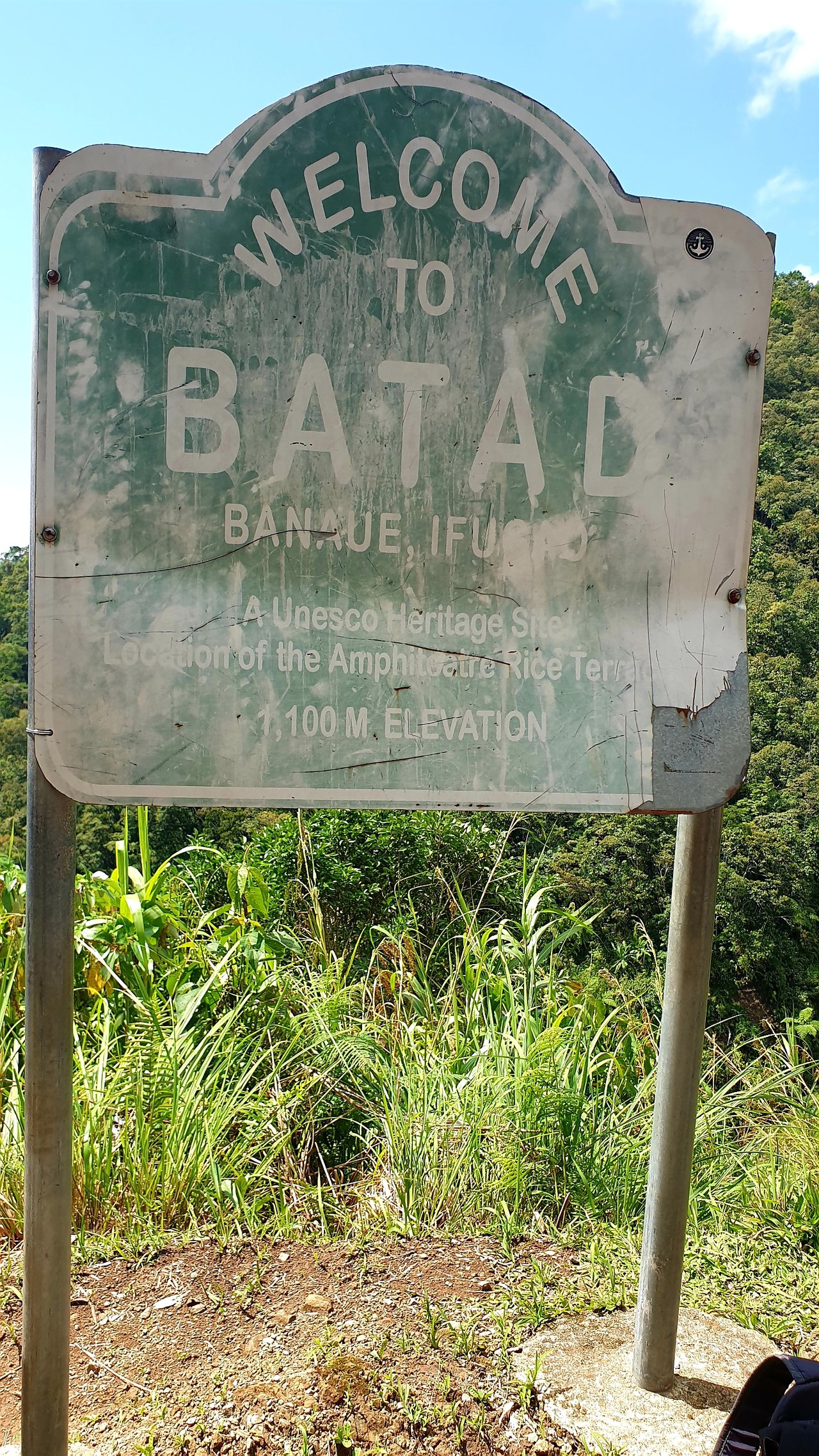
To the right behind the viewpoint is this scenic sight. The rice terraces are very beautiful. Though, that is not yet the climax of the UNECO inscribed land. Those will come on my next post.
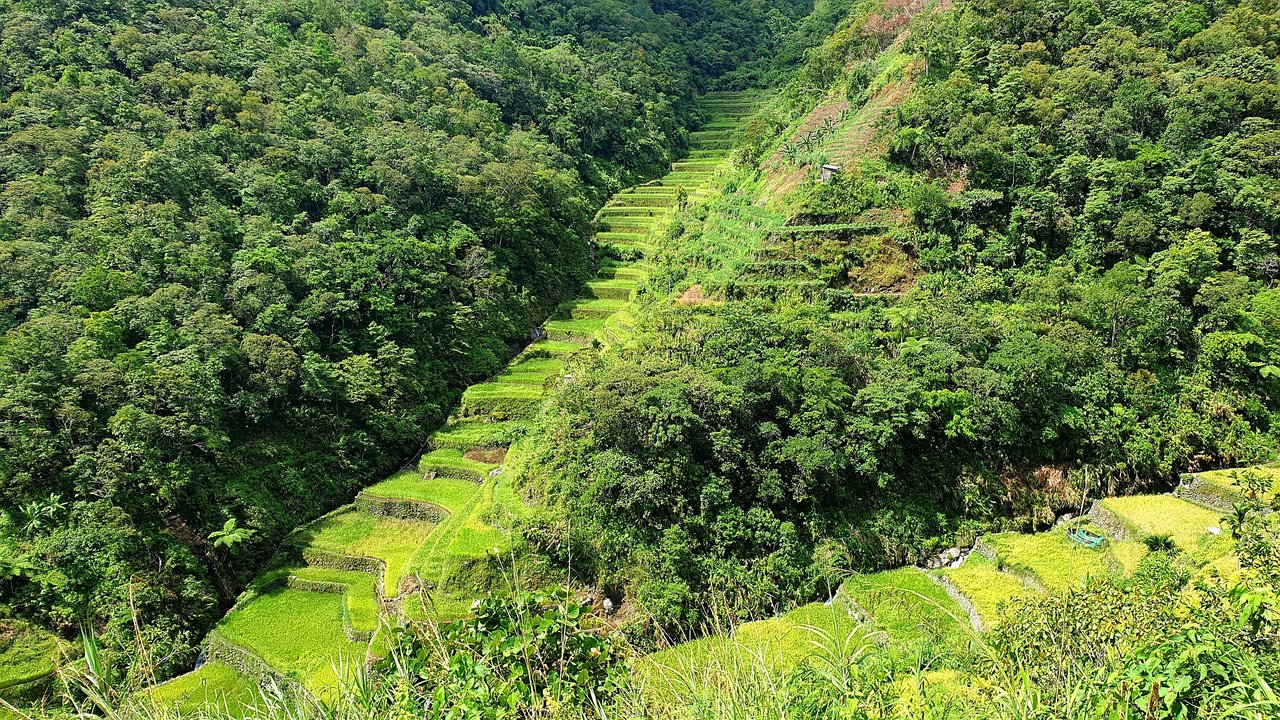
Next to the viewpoint that we came by is this tourist registration center. We all signed up before moving on.
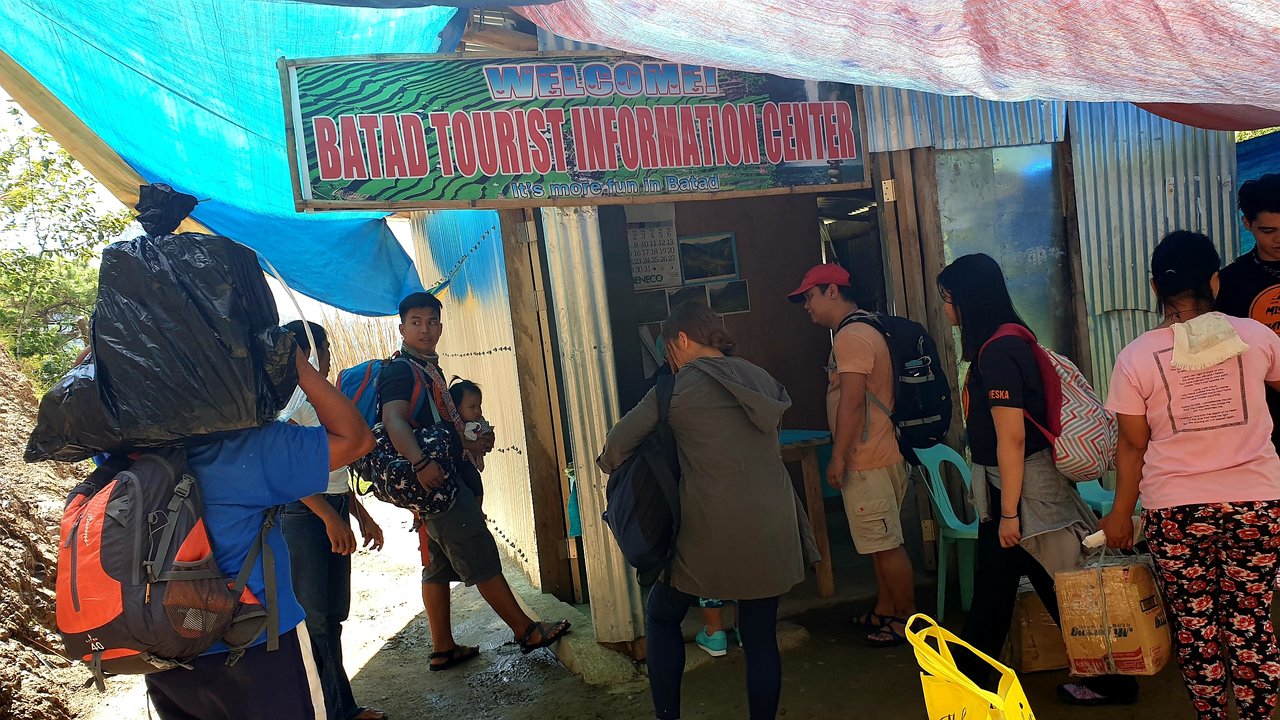
Few more minutes of hike and I saw this. It is the school where we will have the outreach. Finally, we are here! The hike was just about 20 minutes but if you deduct the times for photo shoots, it could have been just ten minutes. That is for us visitors to the place. The locals who carried the relief goods have been long gone before us.
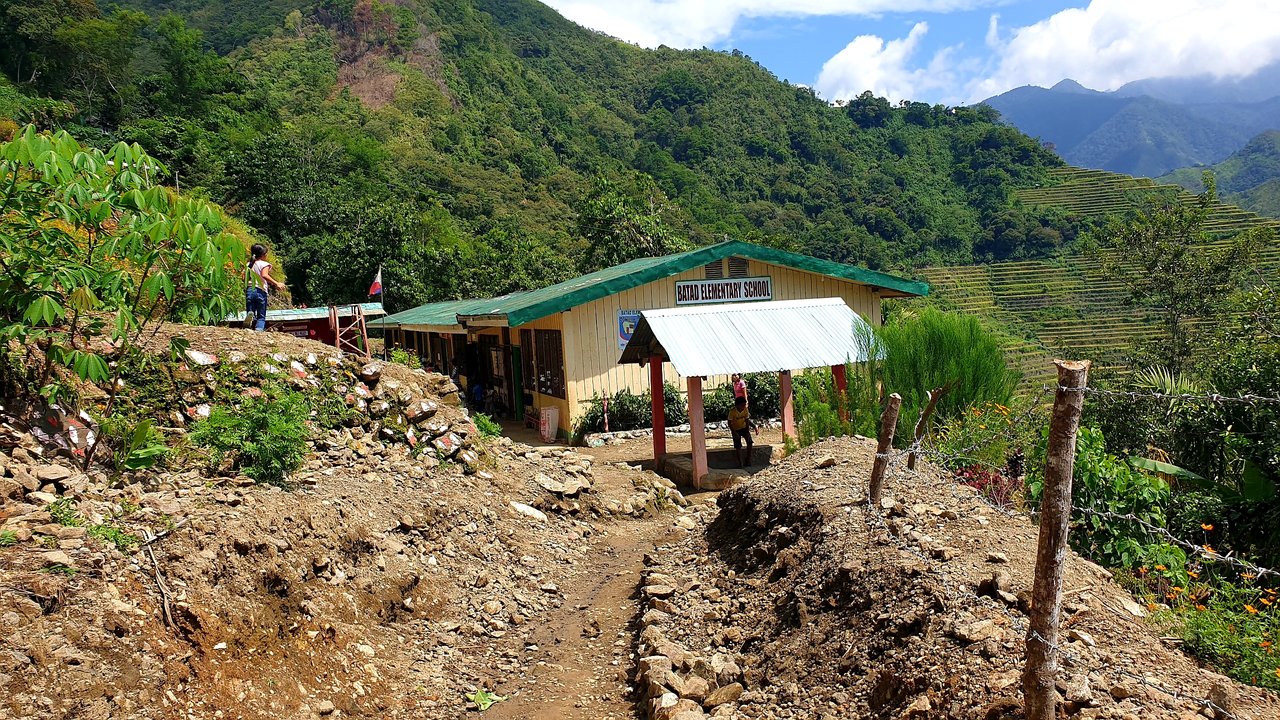
We dumped the relief goods in two rooms.
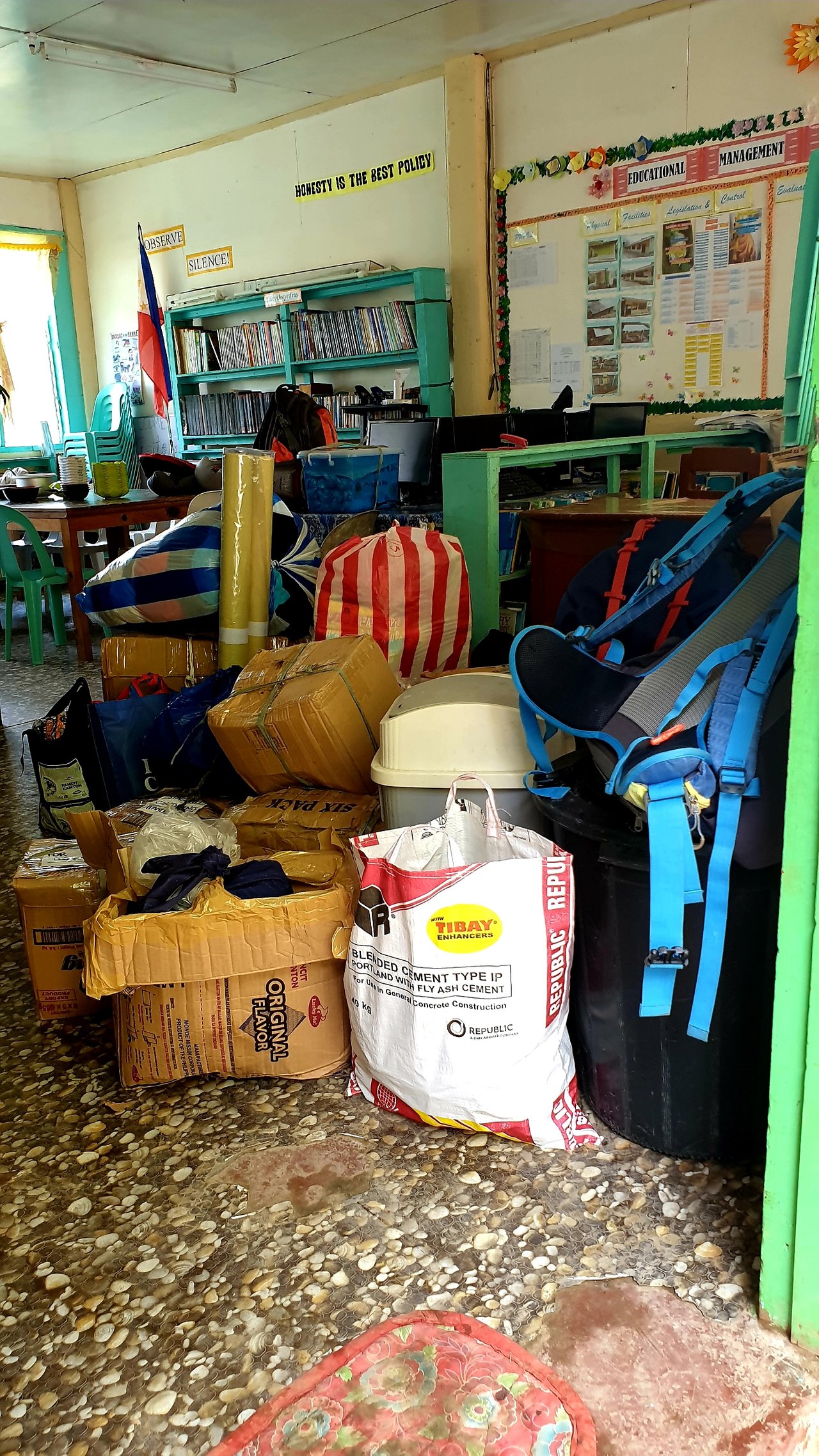
The coordinator announced the different tasks that needs to be done and we volunteered for which role to take. Some of us took care of the mingling with the children by doing body paint for them.
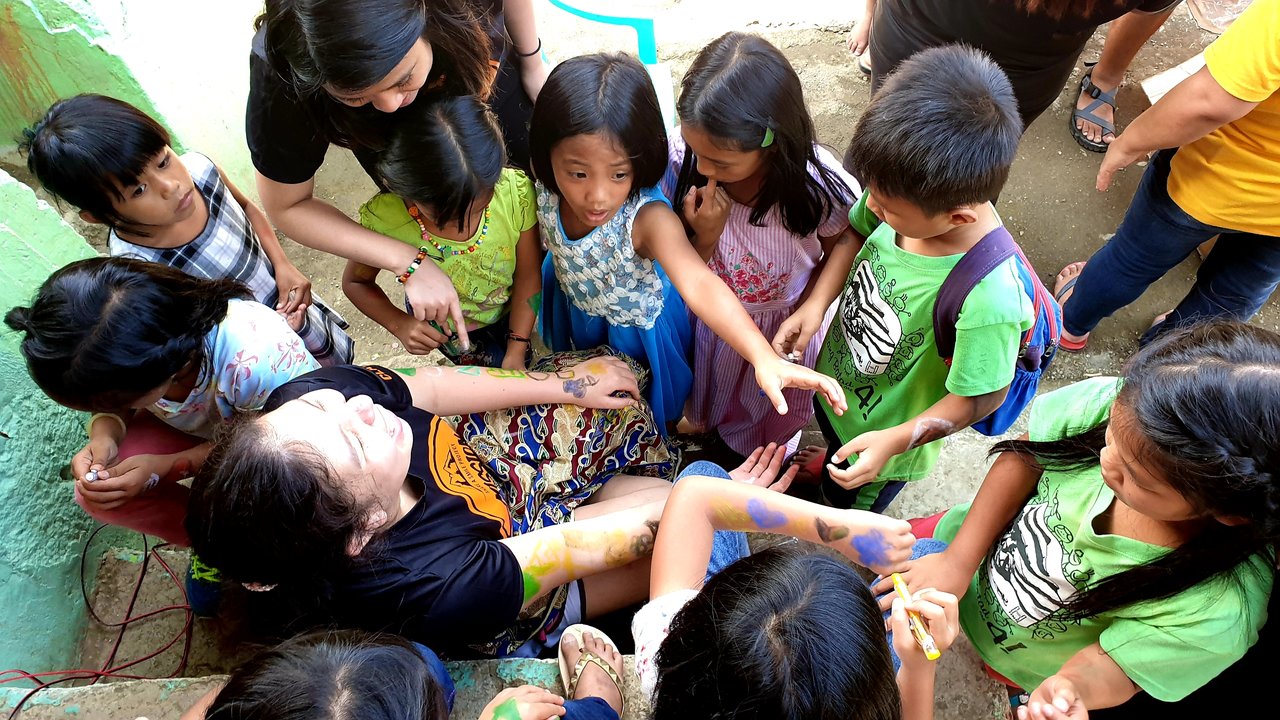
Some took care of preparing the the relief goods.
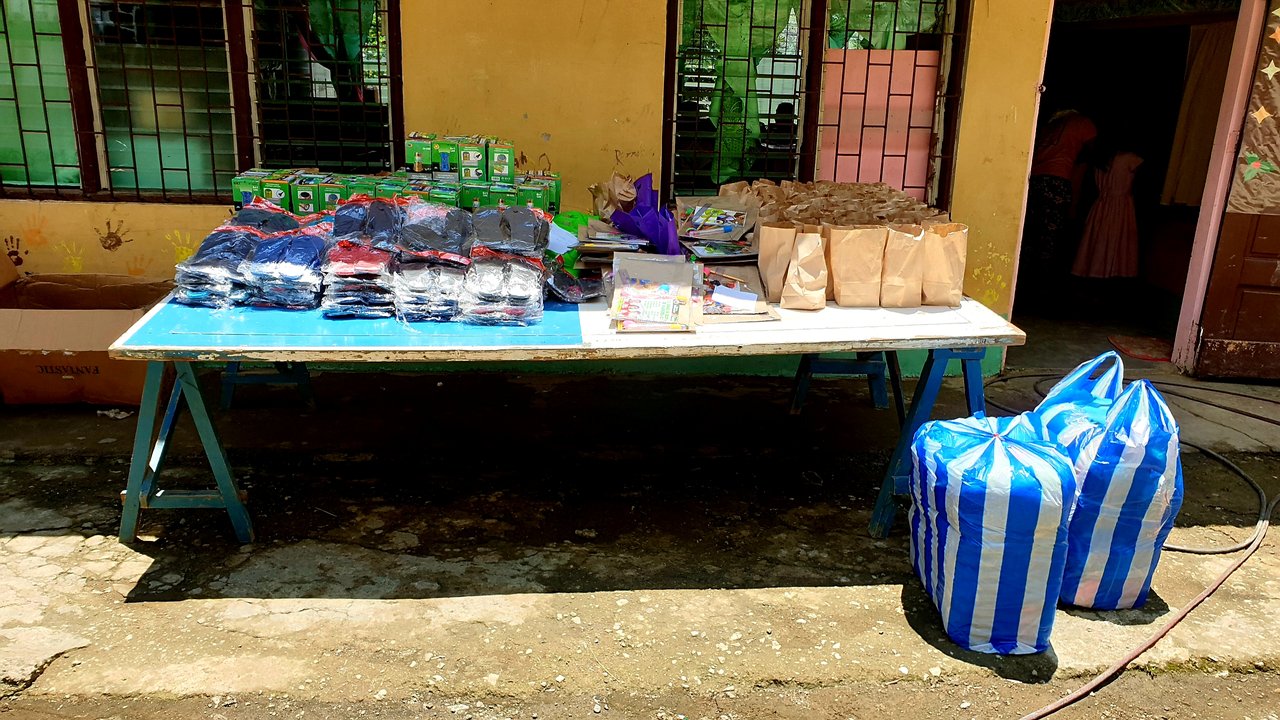
I did not immediately choose what to do. I was waiting and noticed that not much volunteered for the kitchen so I joined those who did. That is an irony because I do not know how to cook. Even so, I know I can be useful there. Our kitchen was in front of one of the classrooms. And we did it the scout's way!
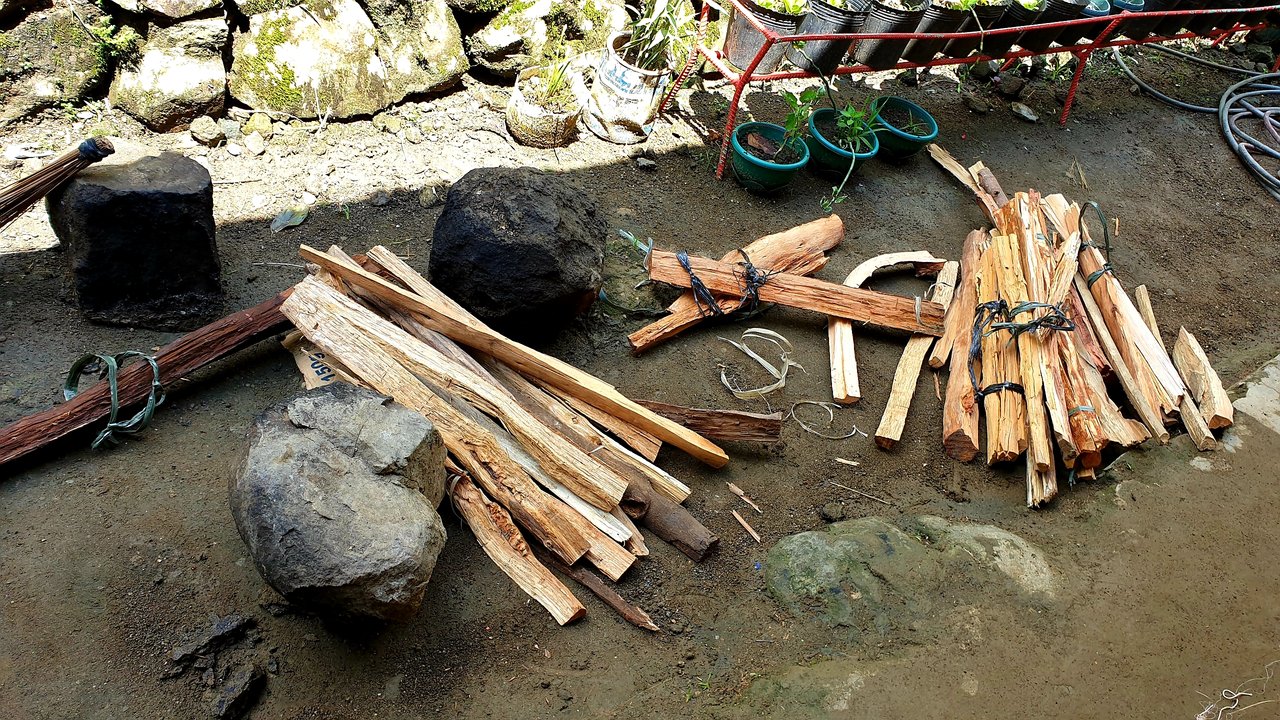
Our goal: cook spaghetti for the children, teachers, residents and for us (if there will left over after the distribution to the first ones).
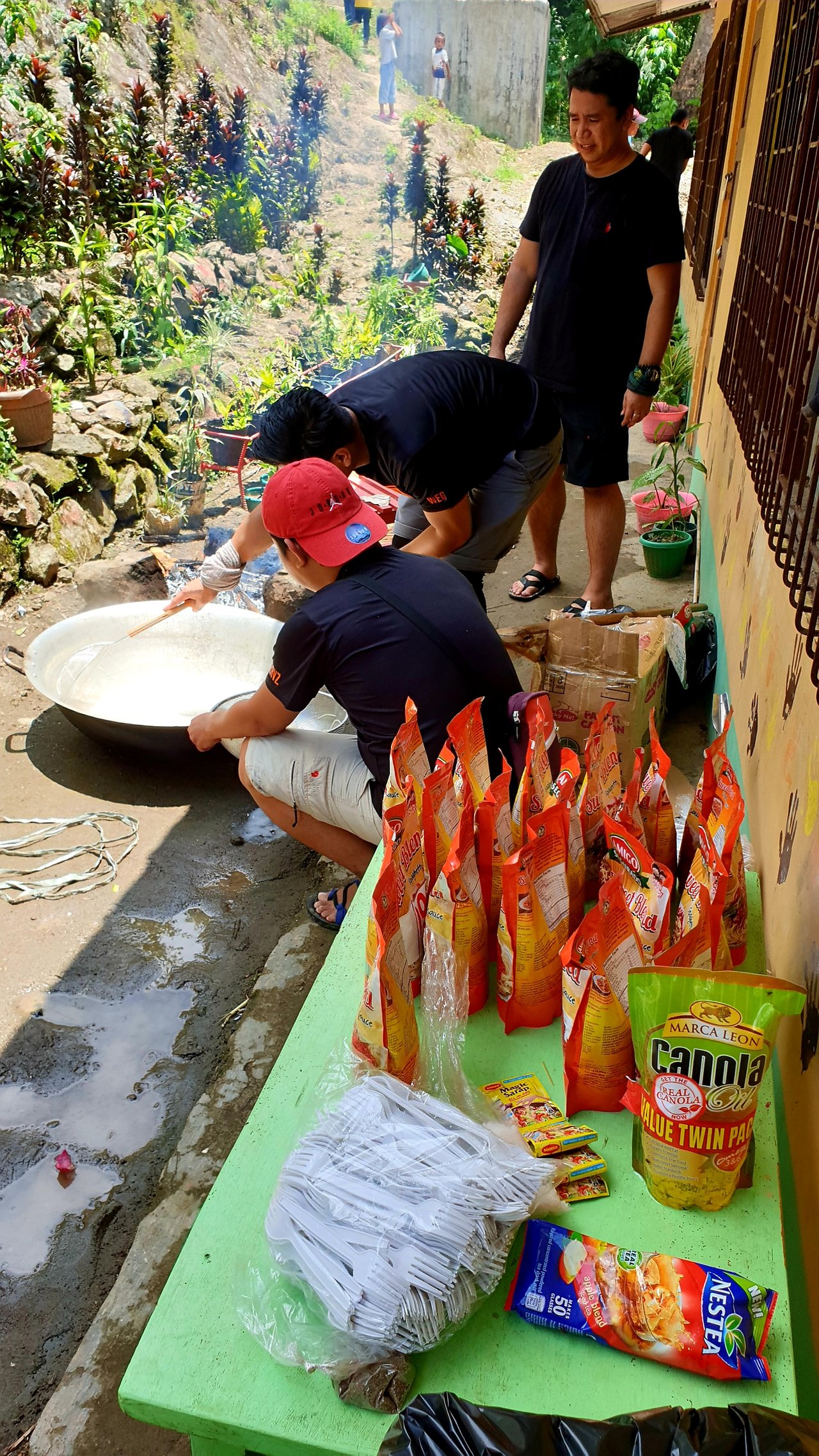
We ladies took the table while the gentlemen faced the stove. Our stove is a giant fire with giant pan. When one of the gentlemen asked for a ladle from one of the residents, he jokingly asked for a paddle. Guess what? He was indeed given a paddle! Very good. The residents here are very obedient!
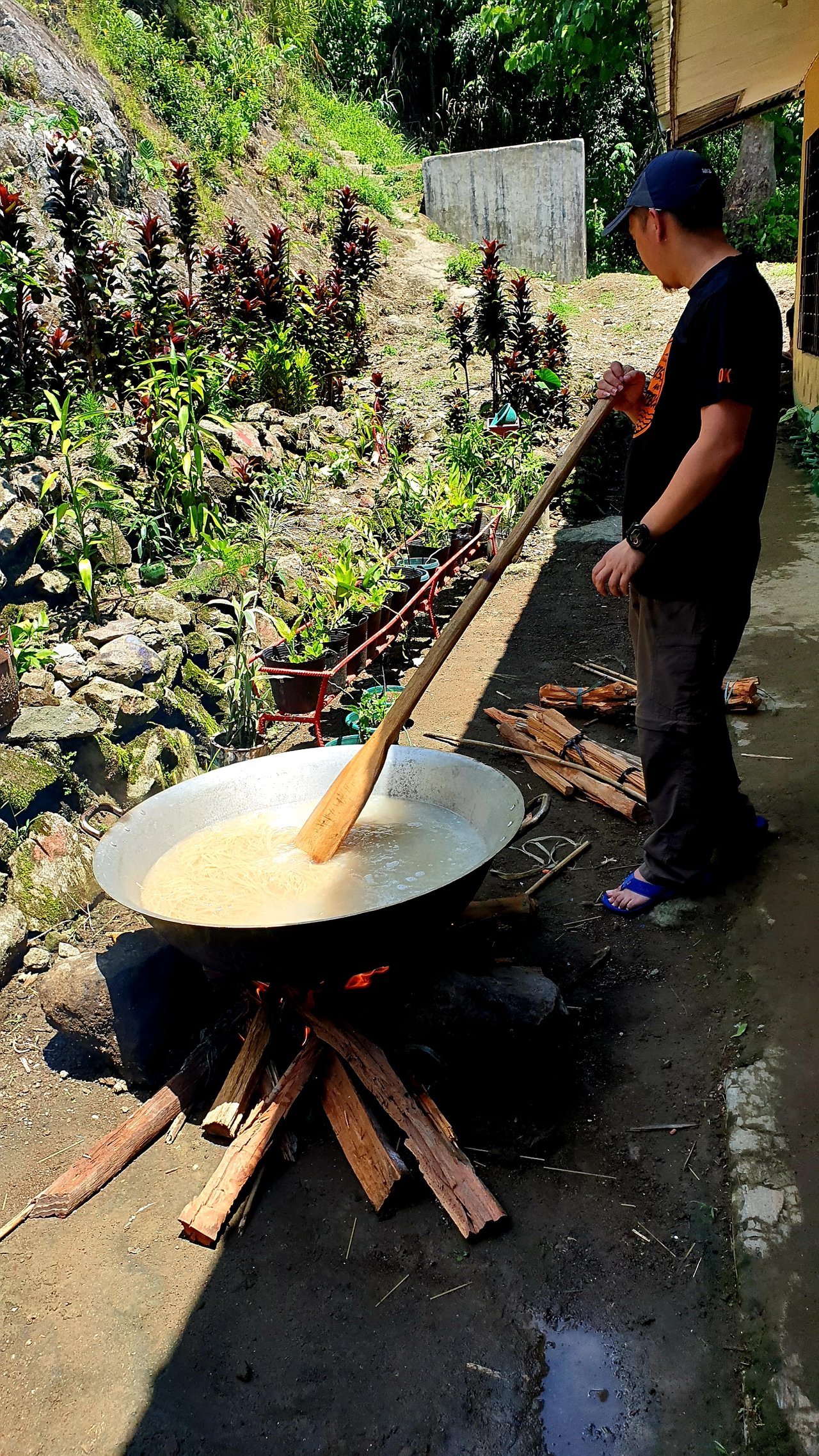
I did not need a mortar and pestle to crack the garlic. It was not a place and time to look for the kitchen I put 6-inch knife on them and pound on the knife. The cracked garlic pieces scattered on the table and few pieces leaped outside of it. My fellow volunteers were laughing and cheering.
One of the guys was saying, "actually, those who do not need tools like that are the ones who are the real survivors."
"Ah, so you're saying those who are from the mountains are becoming obvious?" I jokingly challenged the guy and they again laughed.
I thought I finished a kilogram of garlic. The tips of my fingers started to stiffen when I was done.
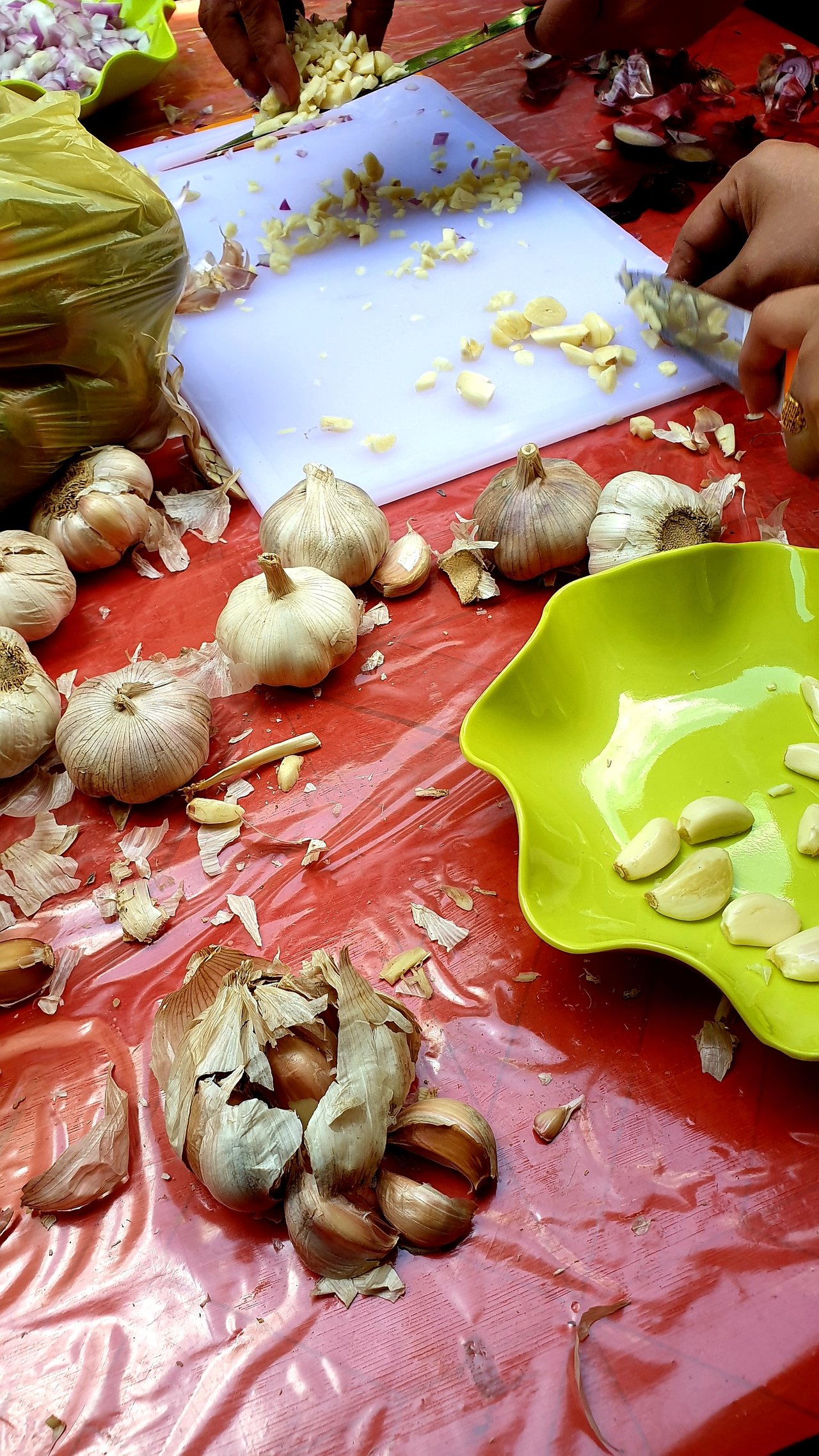
After we prepared the ingredients, we left the guys to do the cooking. We found ourselves with different other tasks. That was cool kitchen experience!
It was already pass one o'clock in the afternoon when they announced that we can start distributing the food. Aside from the spaghetti that we cooked, there was big box of cup cakes that we was donated and we brought from Manila. We distributed it along with the spaghetti. We know everyone is hungry but we just joined the distribution. We waited until those who are in the "kitchen" announced that the volunteers can now eat too.
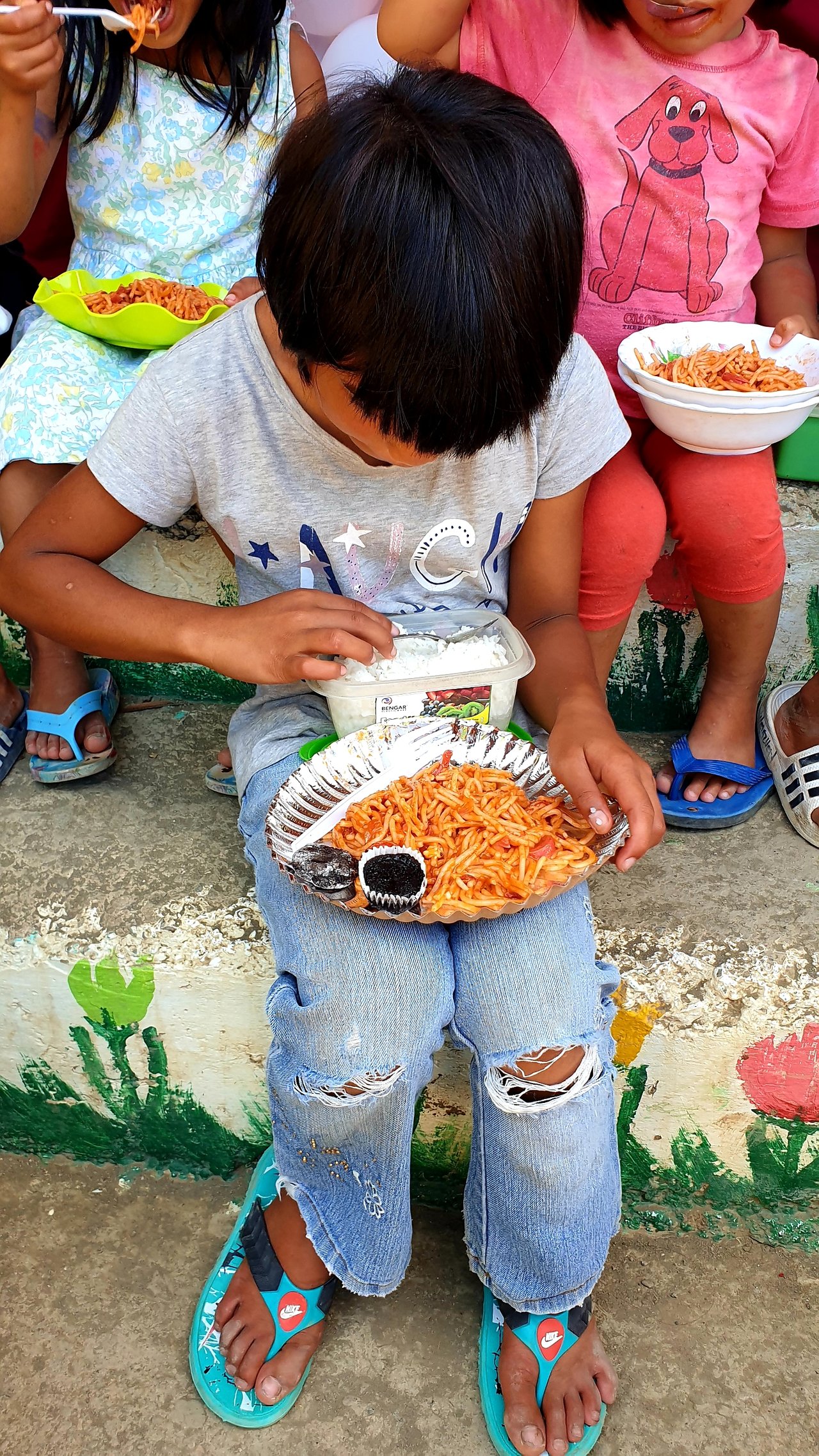
I went inside the classroom where the foods are being served and noted that there are more, much more, food than we thought. To be honest, our coordinator warned us that our next meal may be dinner if the spaghetti will all be consumed by the children and the locals. After all, there was nothing to fear for too much hunger until dinner.
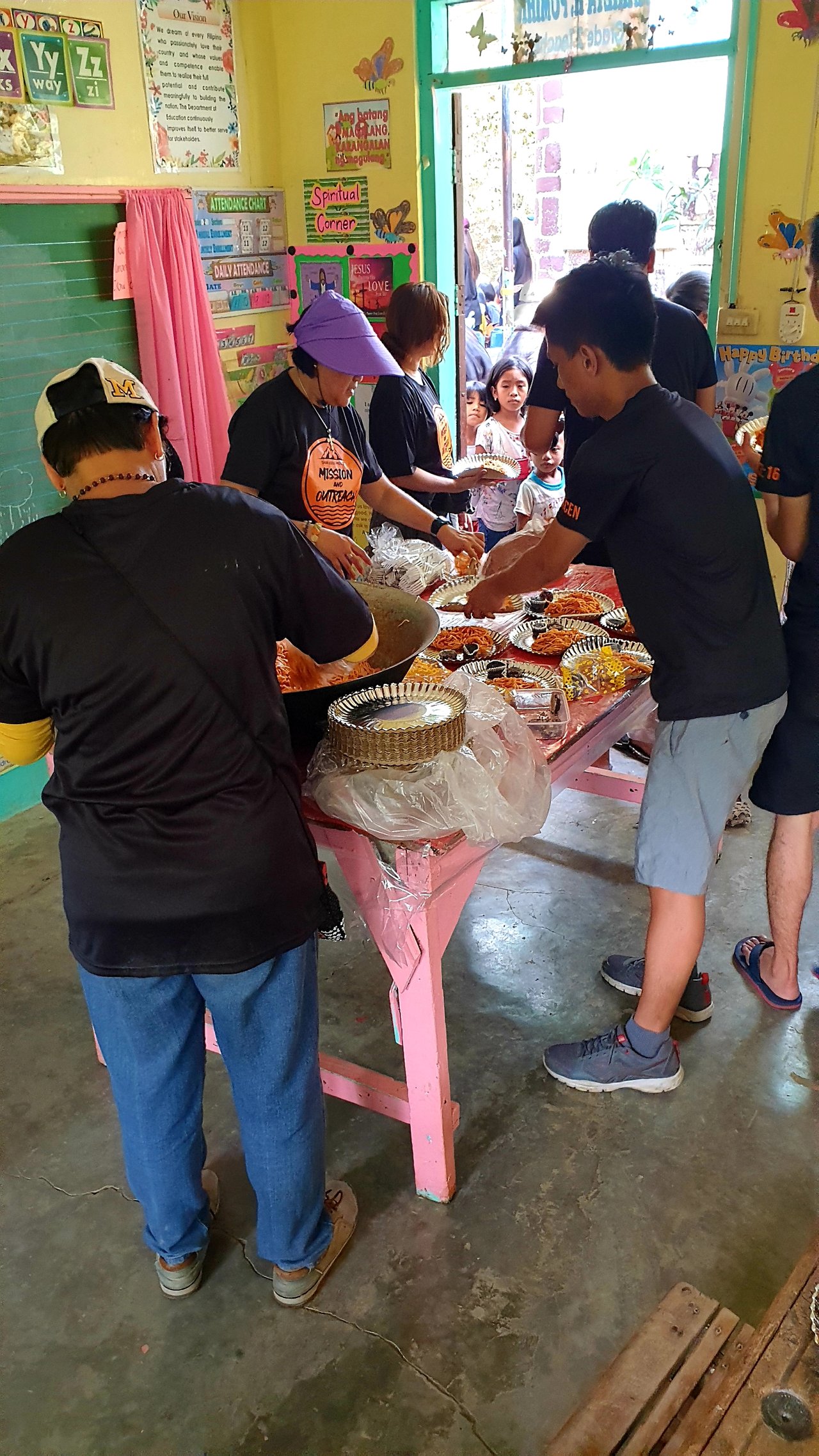
After lunch, the program was started. The children had their presentations in the peak of the sun and as if it is nothing. They went on.
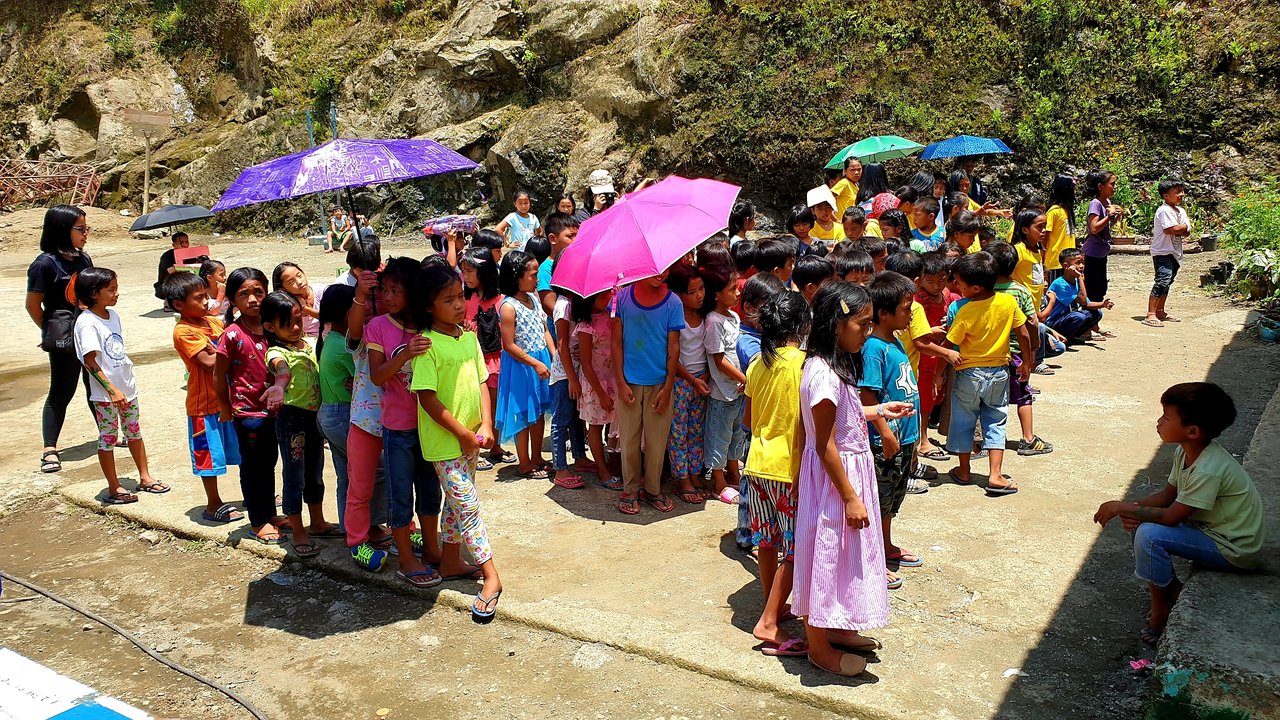
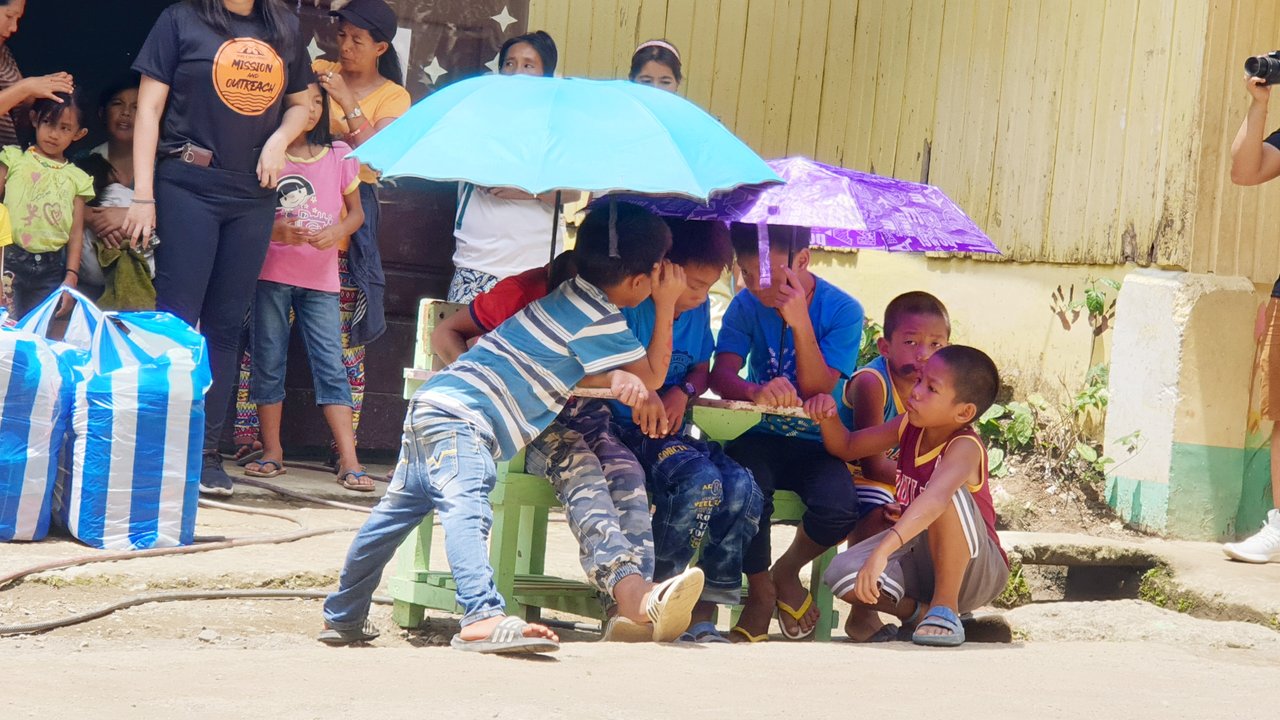
Relief goods were distributed.
Slippers for adults and children alike.
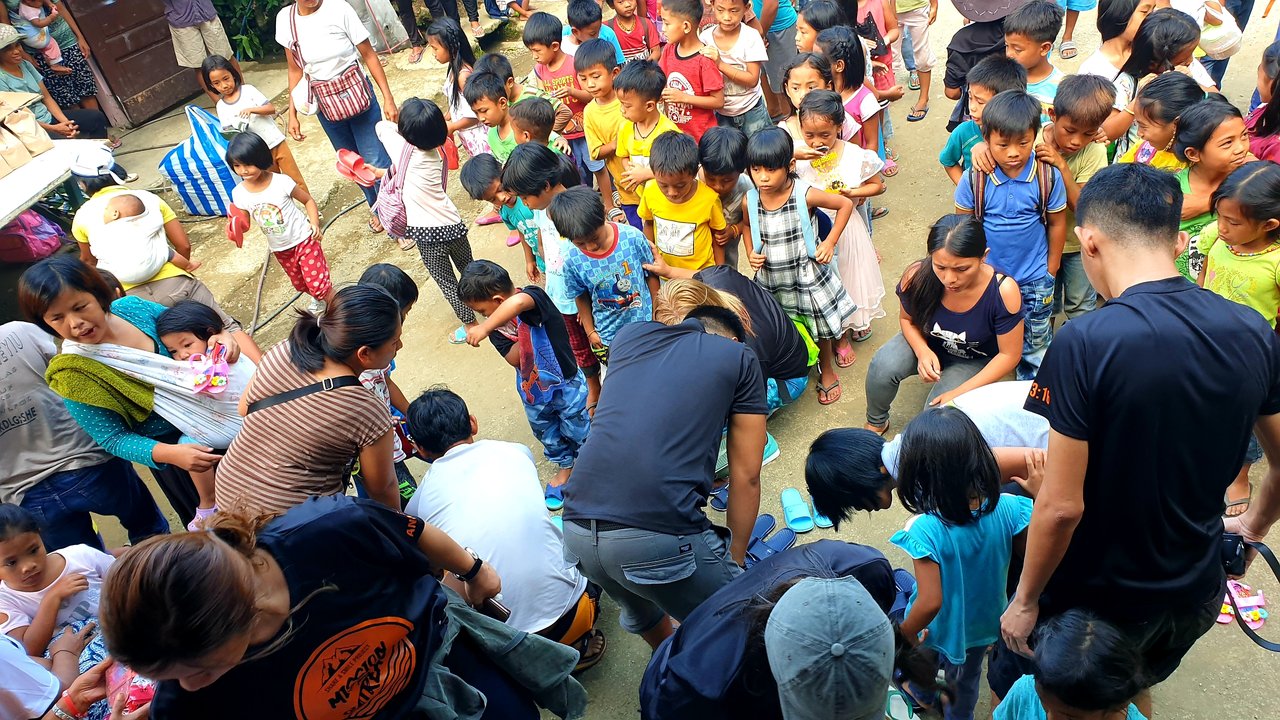
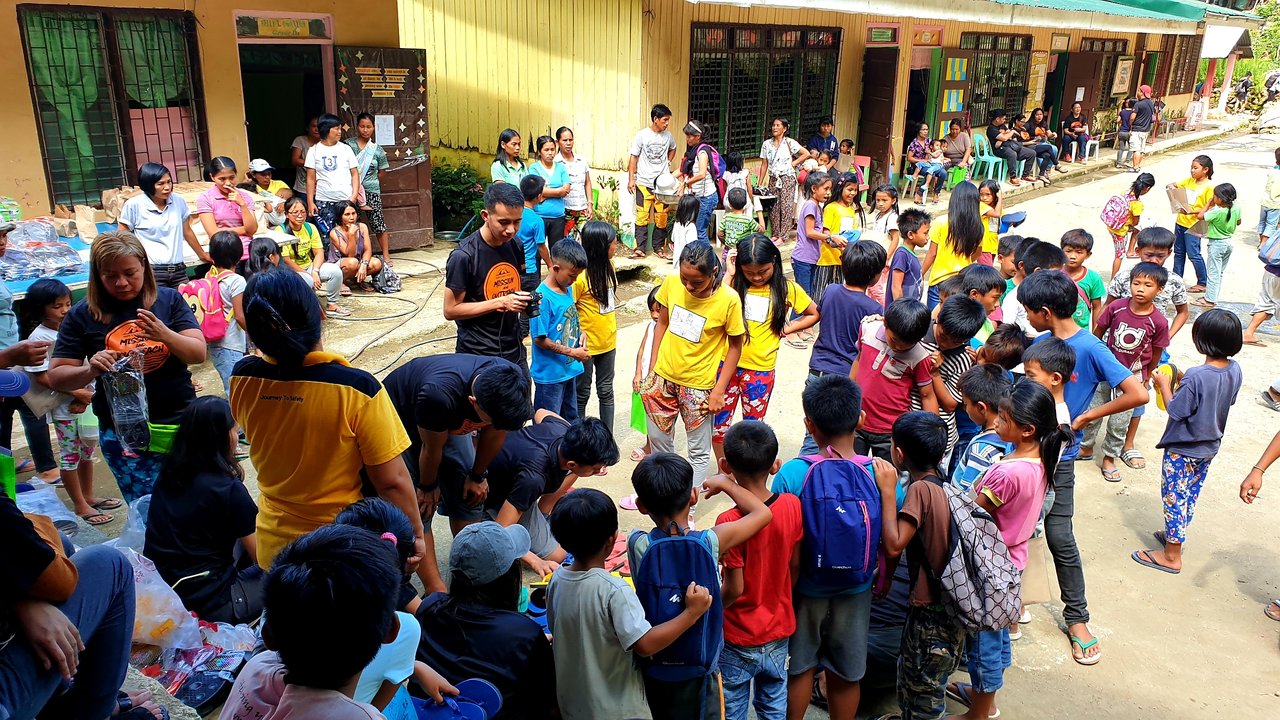
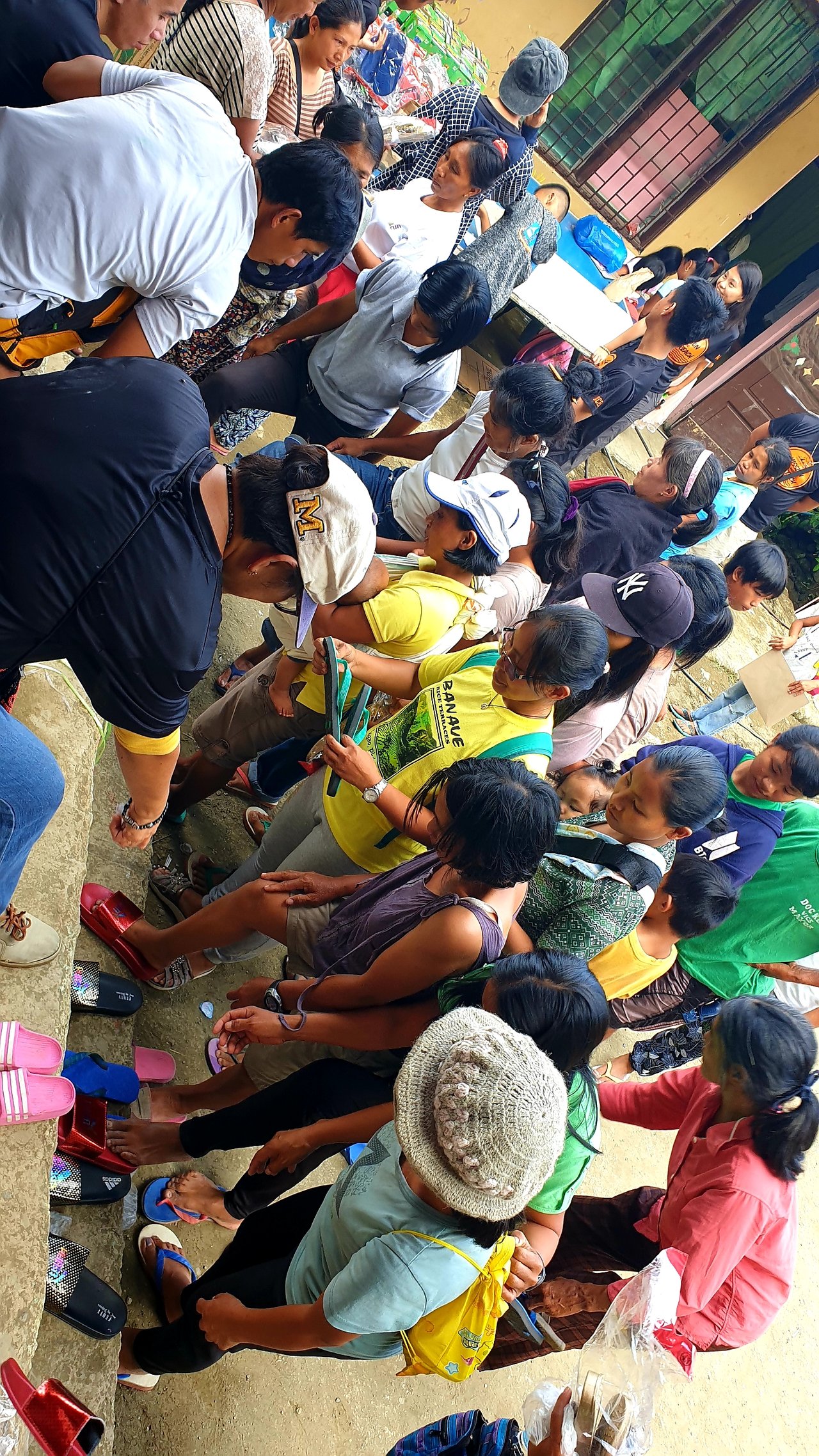
Jackets for adults.
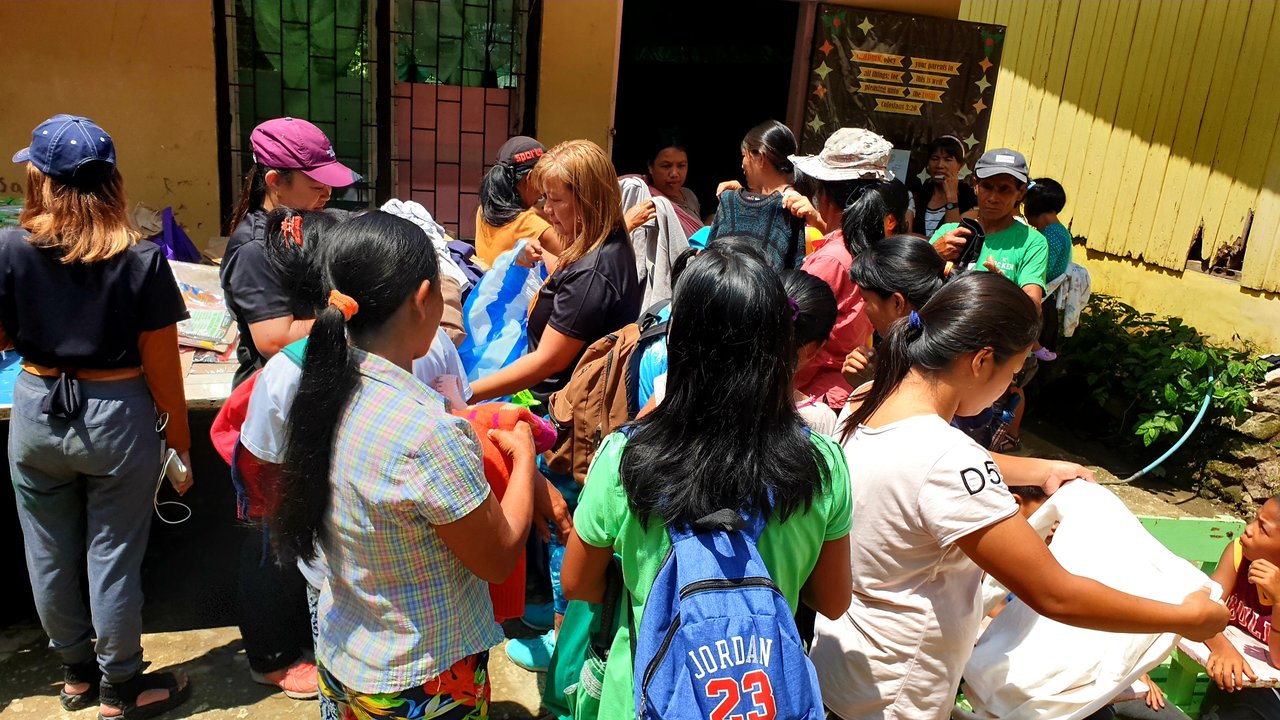
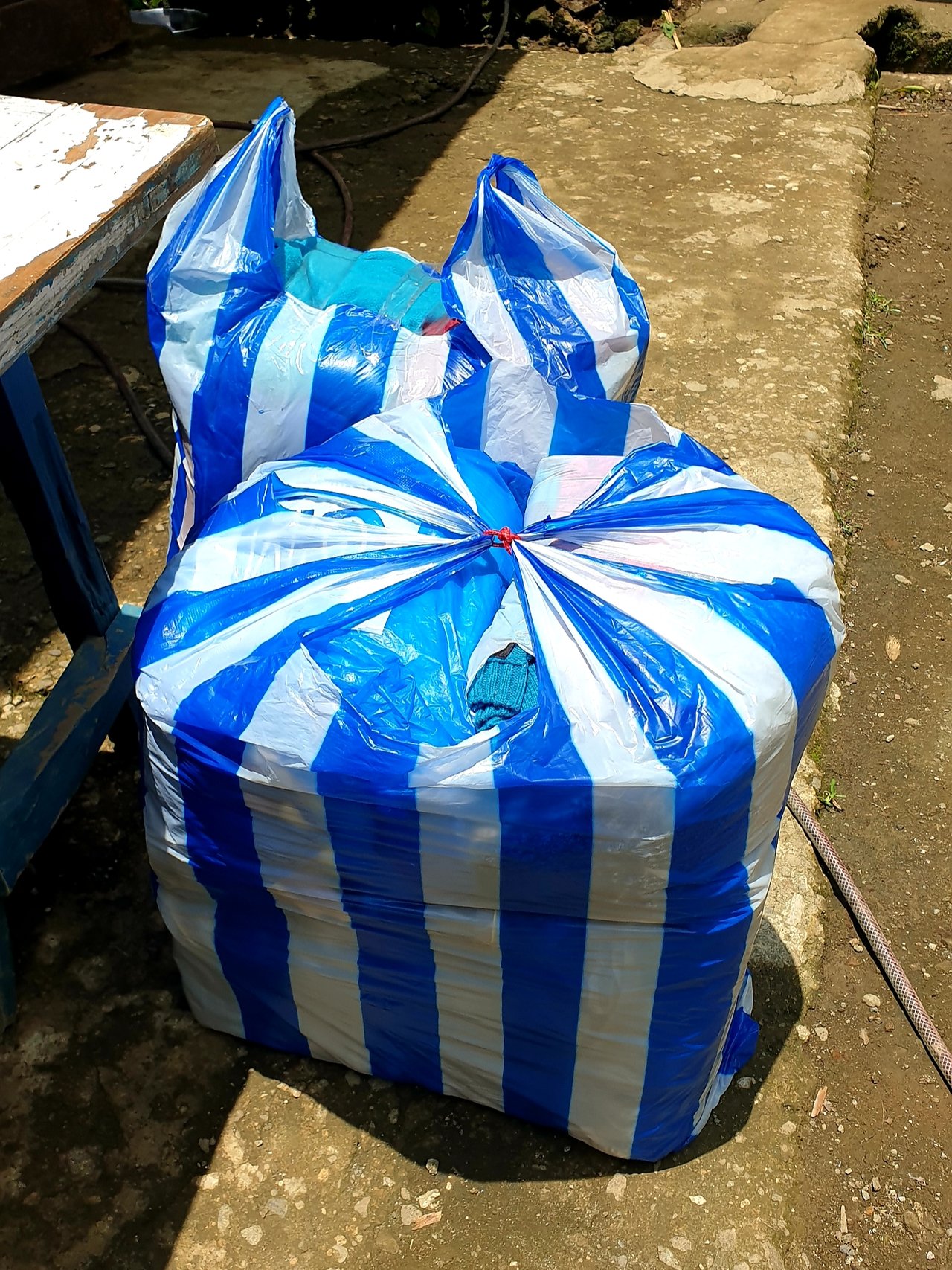
School supplies for the children.
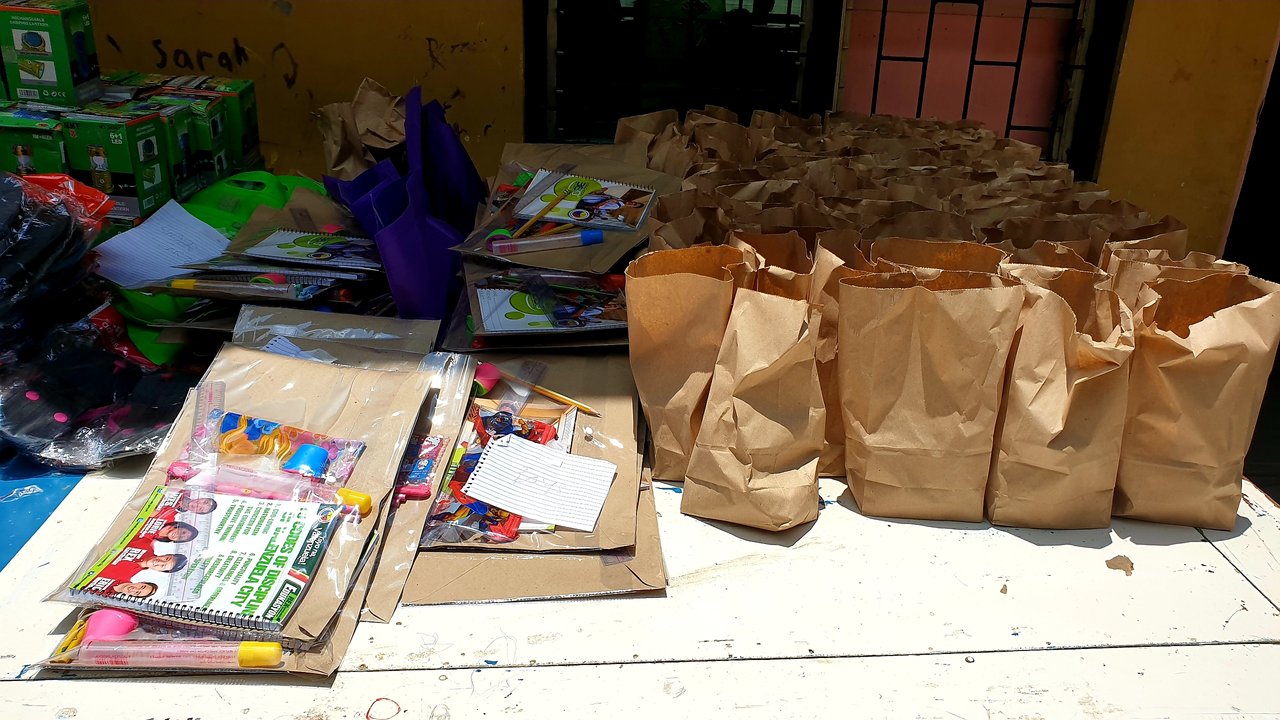
And solar lamps.
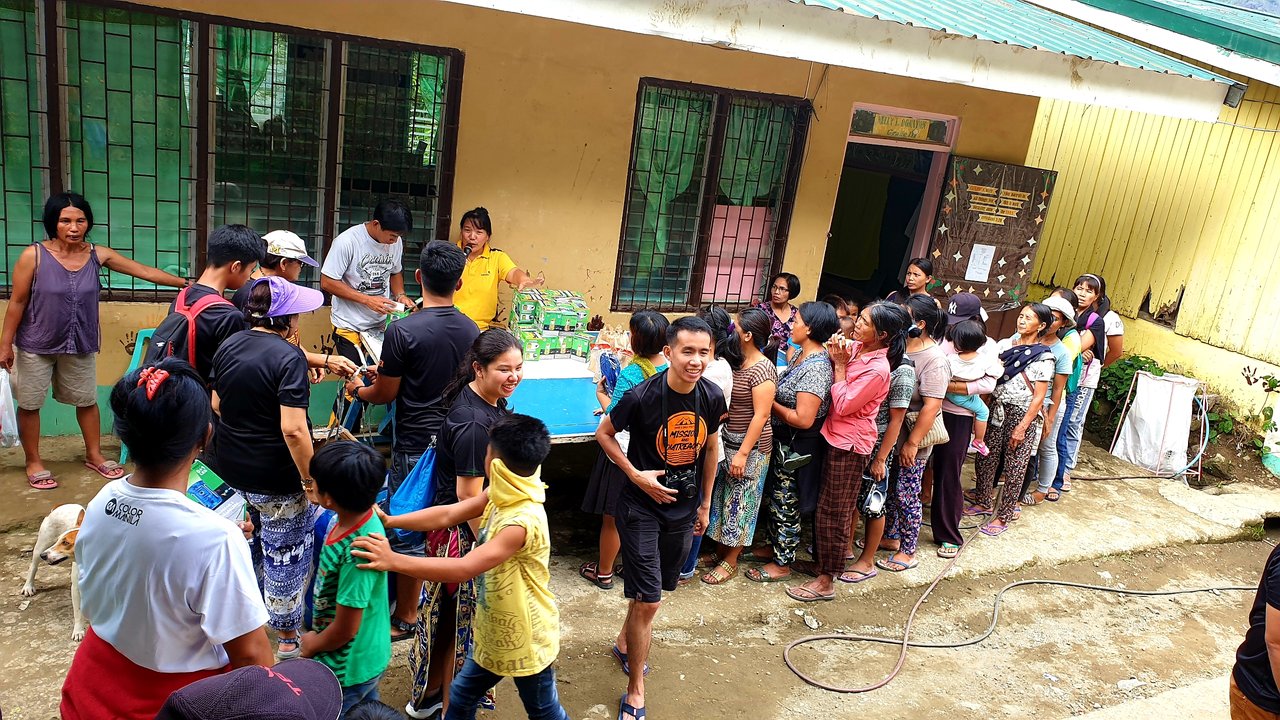
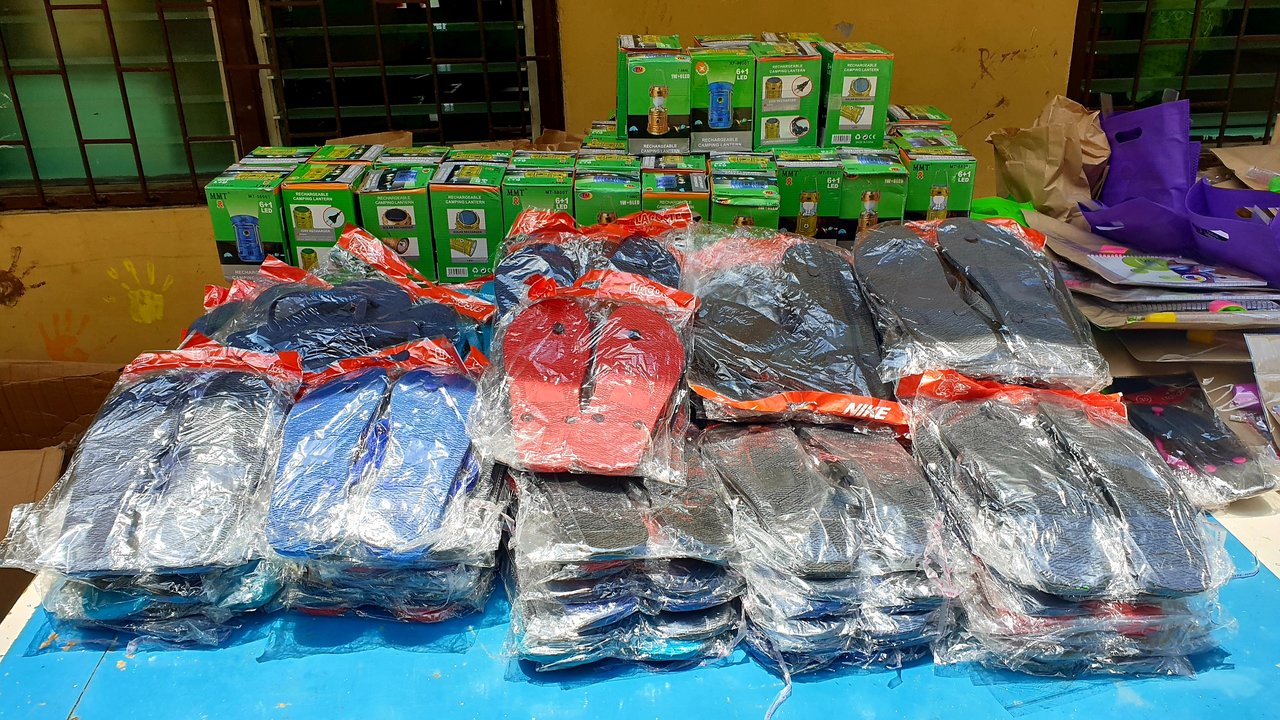
The solar lamps were mainly intended for residents of a small village which was said to have no supply of electricity. I asked where the village is located from the school and it was not visible when they pointed out to another mountain. They said it is two more mountains away and these four residents walked for about two hours just to be here and receive the lamps. There are 36 more families in there that were not given solar lamps during this project's first visit last year. We have more than 36 lamps now! The remaining lamps that were for the 36 families who did not make it here today were entrusted to one of the teachers.
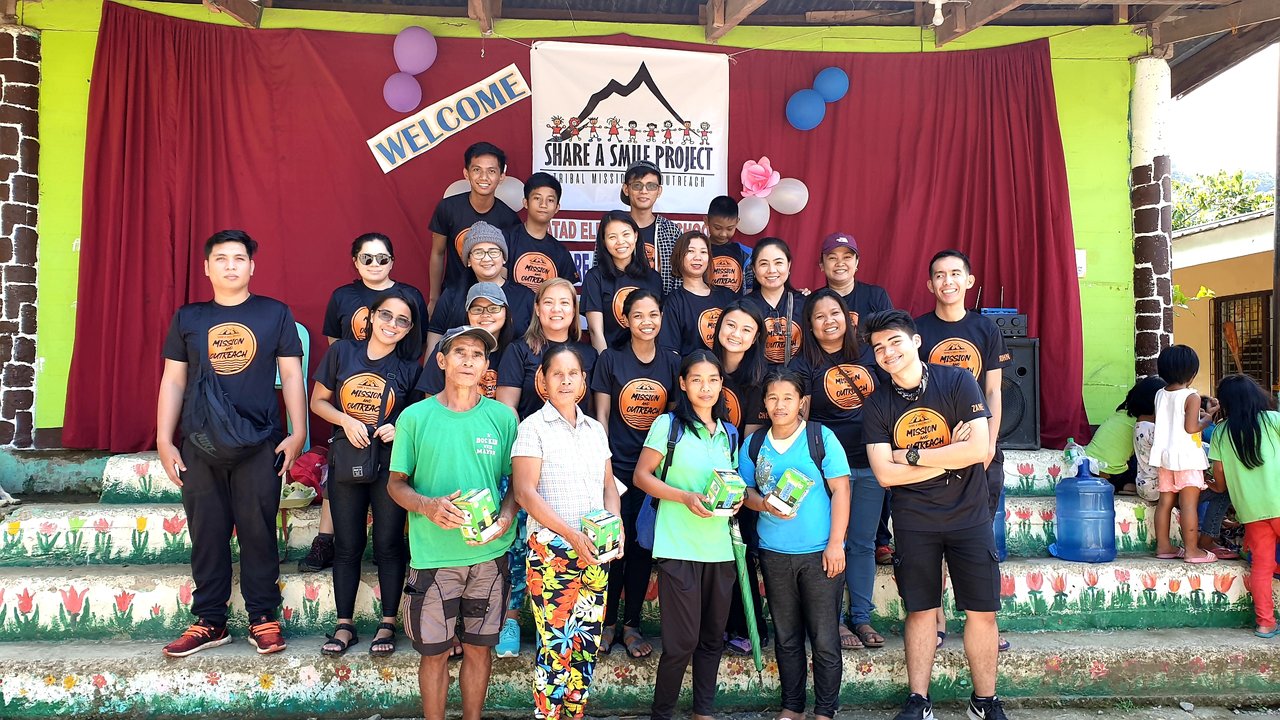
I thought I would cry about the story of the residents on the remote village but no. I have to rejoice being there and part of the project. I was belittling the ten (and I thought, "just ten.") solar lamps that I donated but now I realized how valuable they are. One solar lamp costed about P150.00 or around US$ 2.91. That is like life to others while others can afford a Starbucks coffee that can cost more than that. At a certain point, I felt guilty and humbled down to the ground.
After all the outdoor activities, one of the coordinators invited us to go inside one of the classrooms where we dumped the relief goods. She said we will now turn over the solar panel for the church and teaching aids for the teachers.
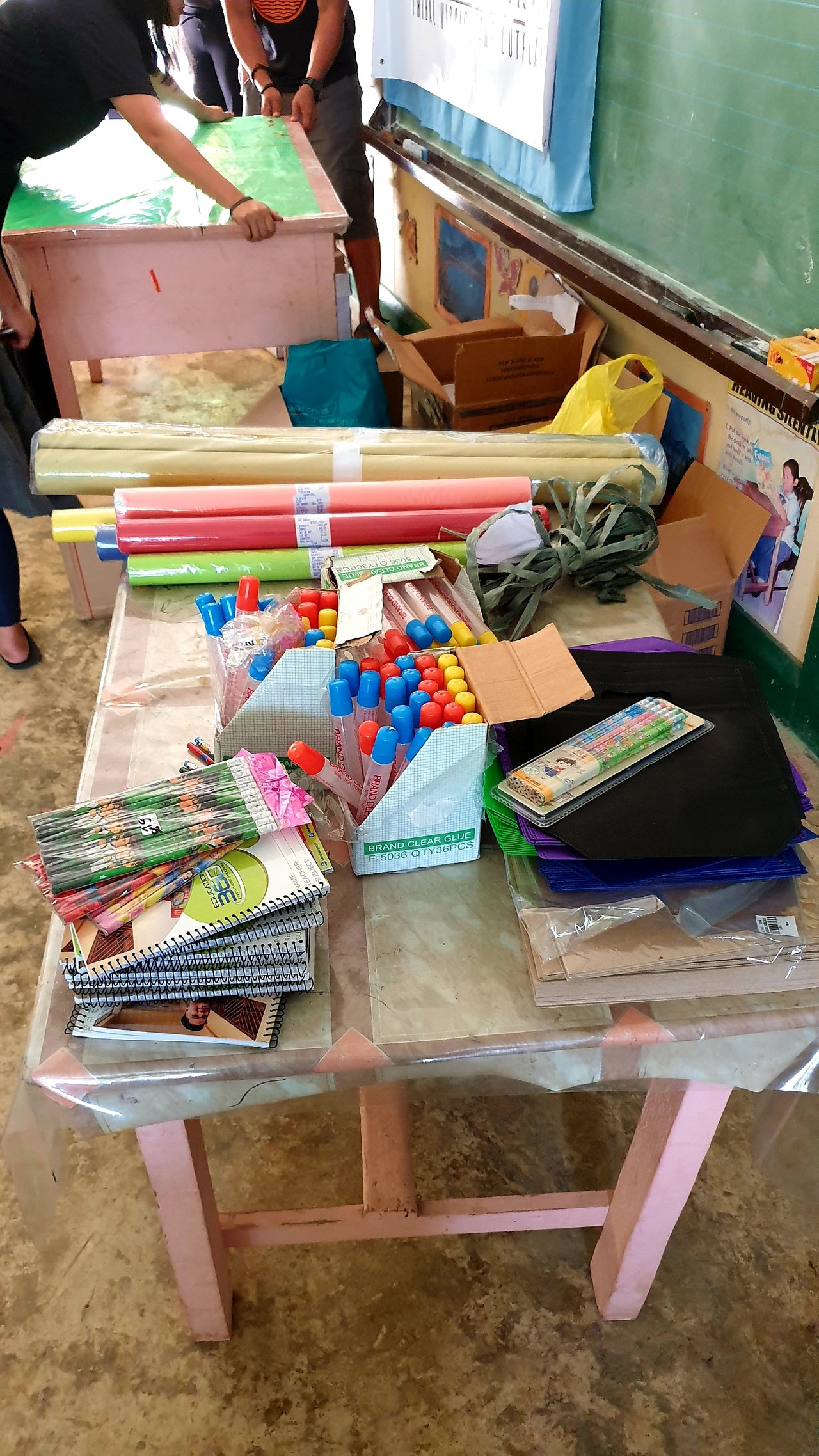
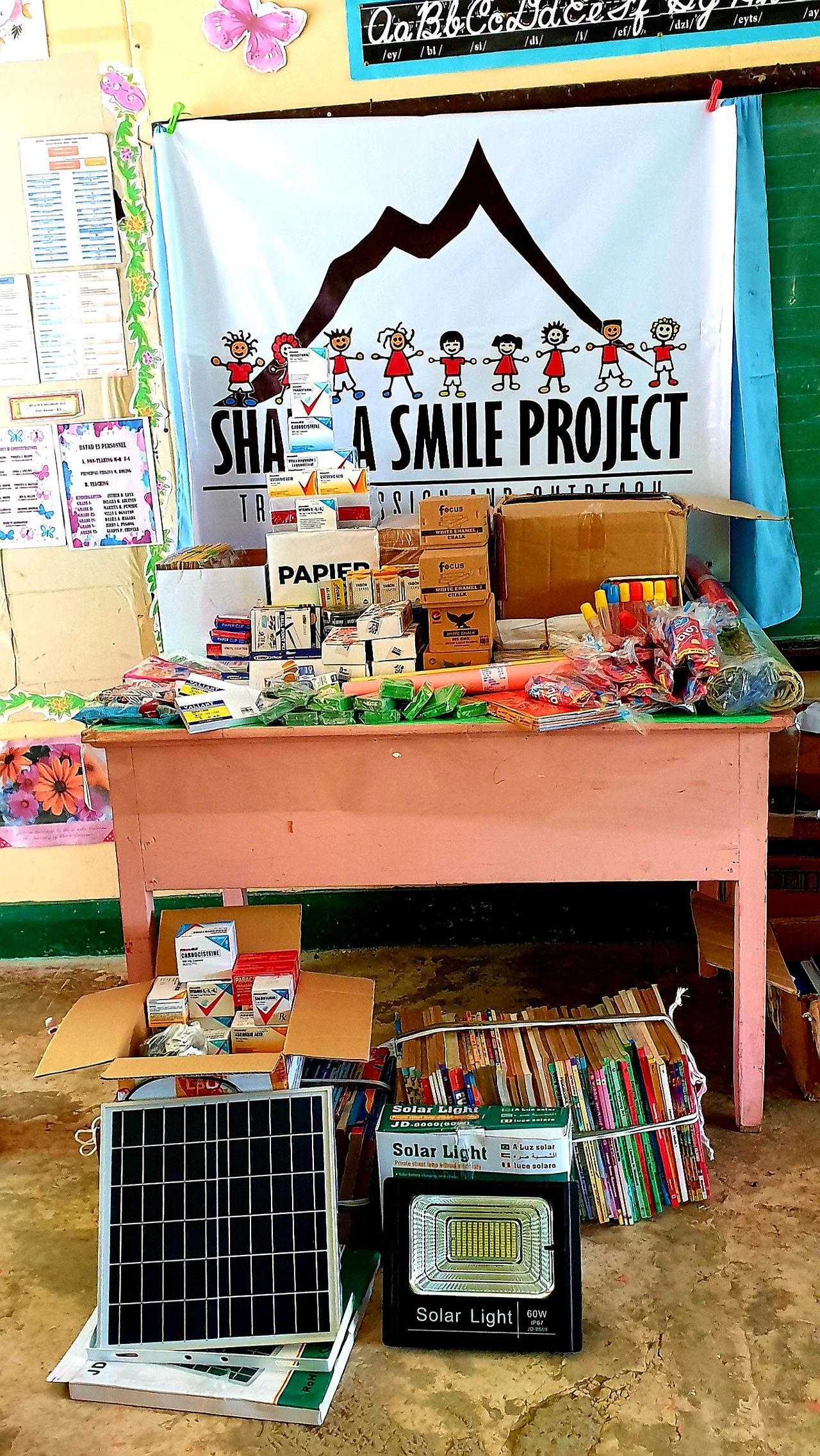
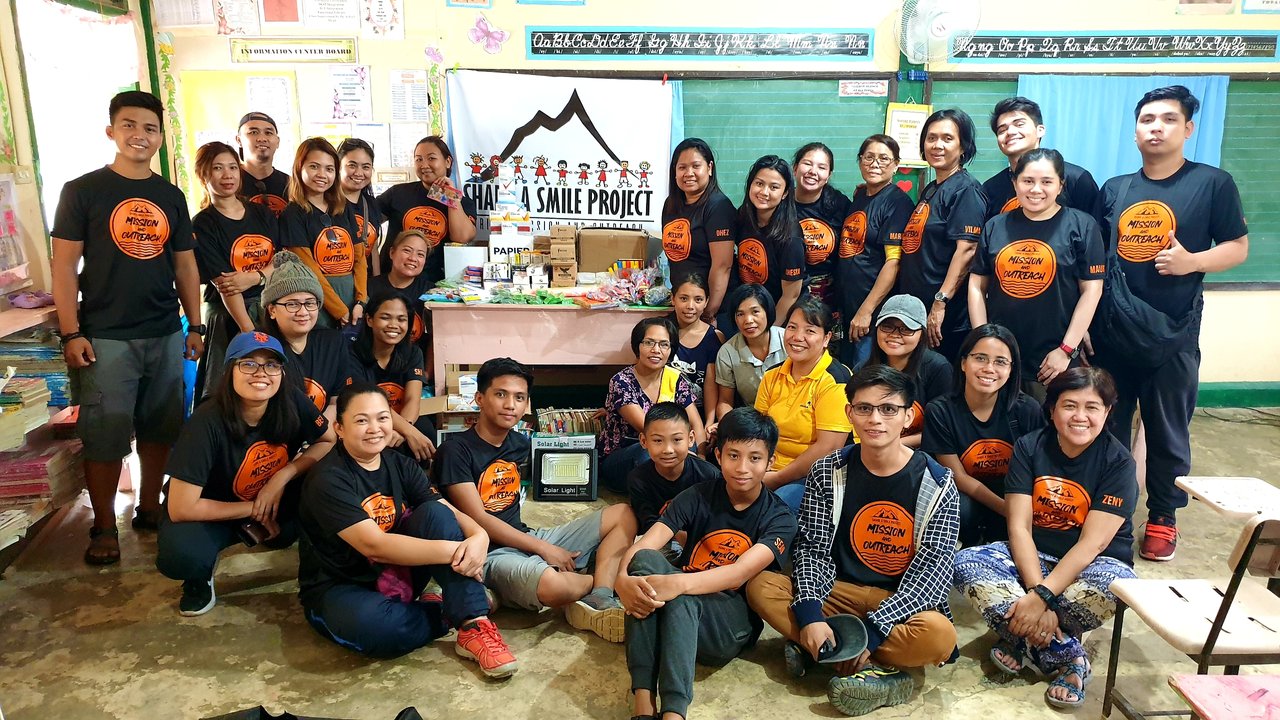
That concluded our outreach at around 3:30 in the afternoon. I felt like it was already one full day of activity given our lack of sleep from the overnight trip from Metro Manila. In spite of all the challenges, it was a very fulfilling travel for me. No one can bargain the very heart-warming reception that the locals have shown us. No one can underrate the smiles that beamed on their faces, specially the children. And I can't help sharing some of those smiles.
These kids can be mine. I remembered them when I was back in Manila and wondered if I could have brought them home.
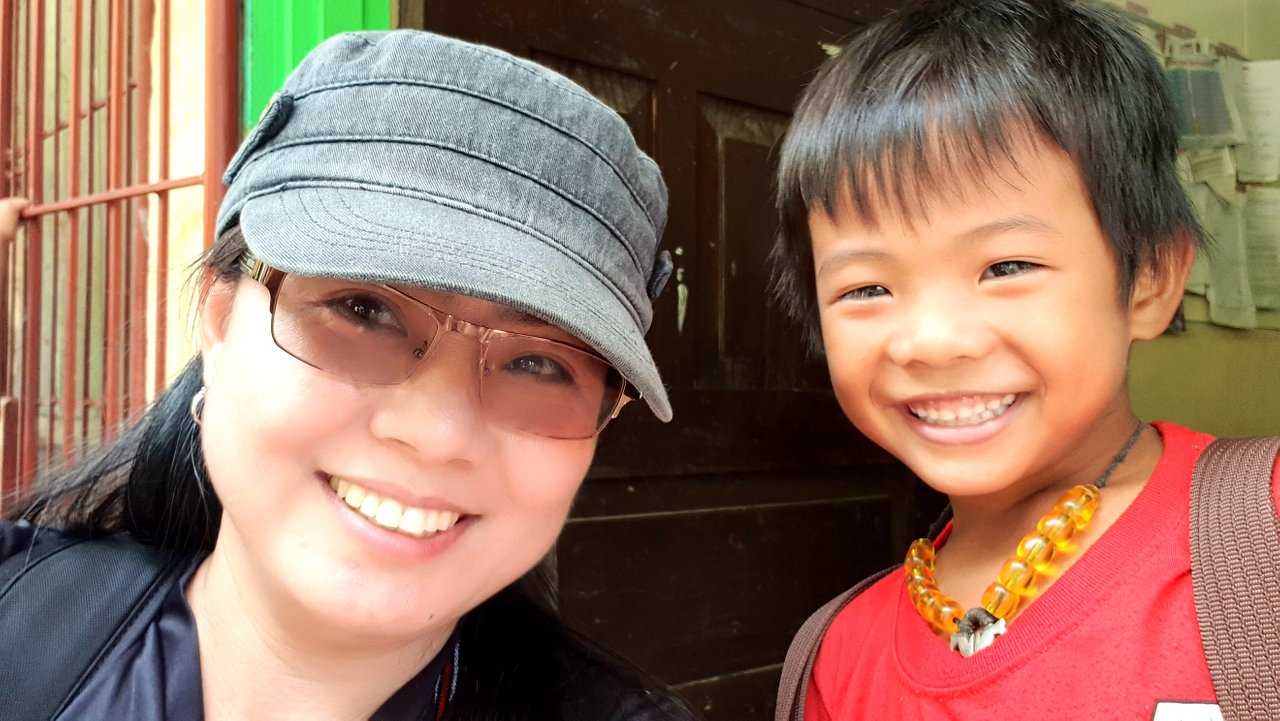
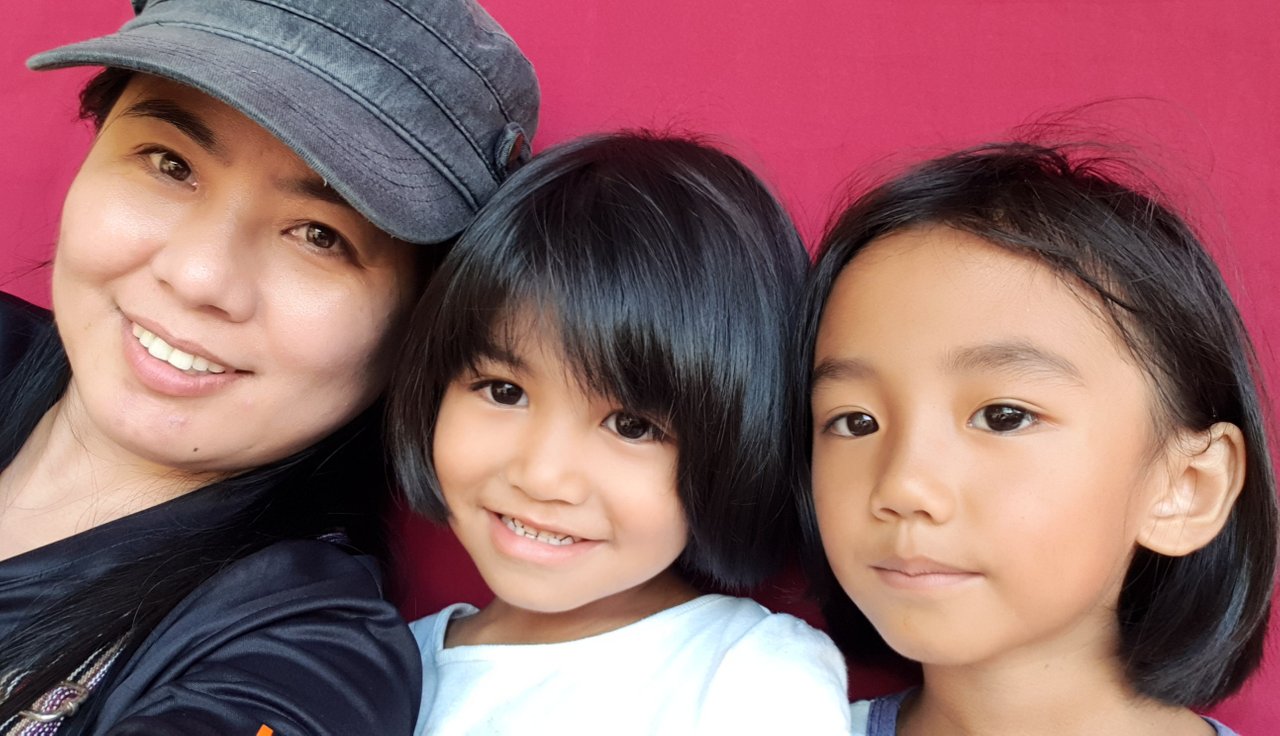
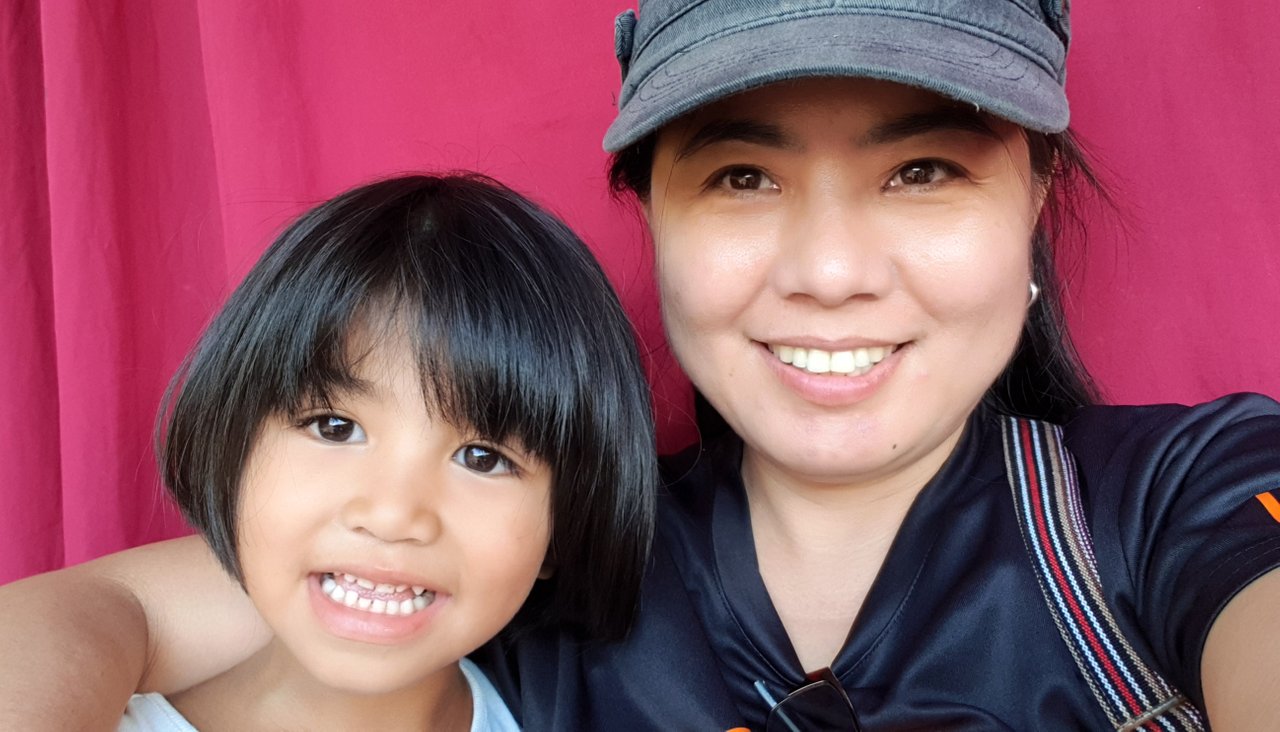
The next adventure is our further descend to the main village which I will relate on my next post. Stay tuned...

Join #ccc for Guaranteed 👍 Daily Income 💵 and Payout 💸 for Newbies (2.0) 🐟 🐜 🐛 in #ccc 👣 and Follow 👣 the Honor Code 🏅 - the Creed (Conditions and Limits Inside) AND the latest update <<< please click to read.



